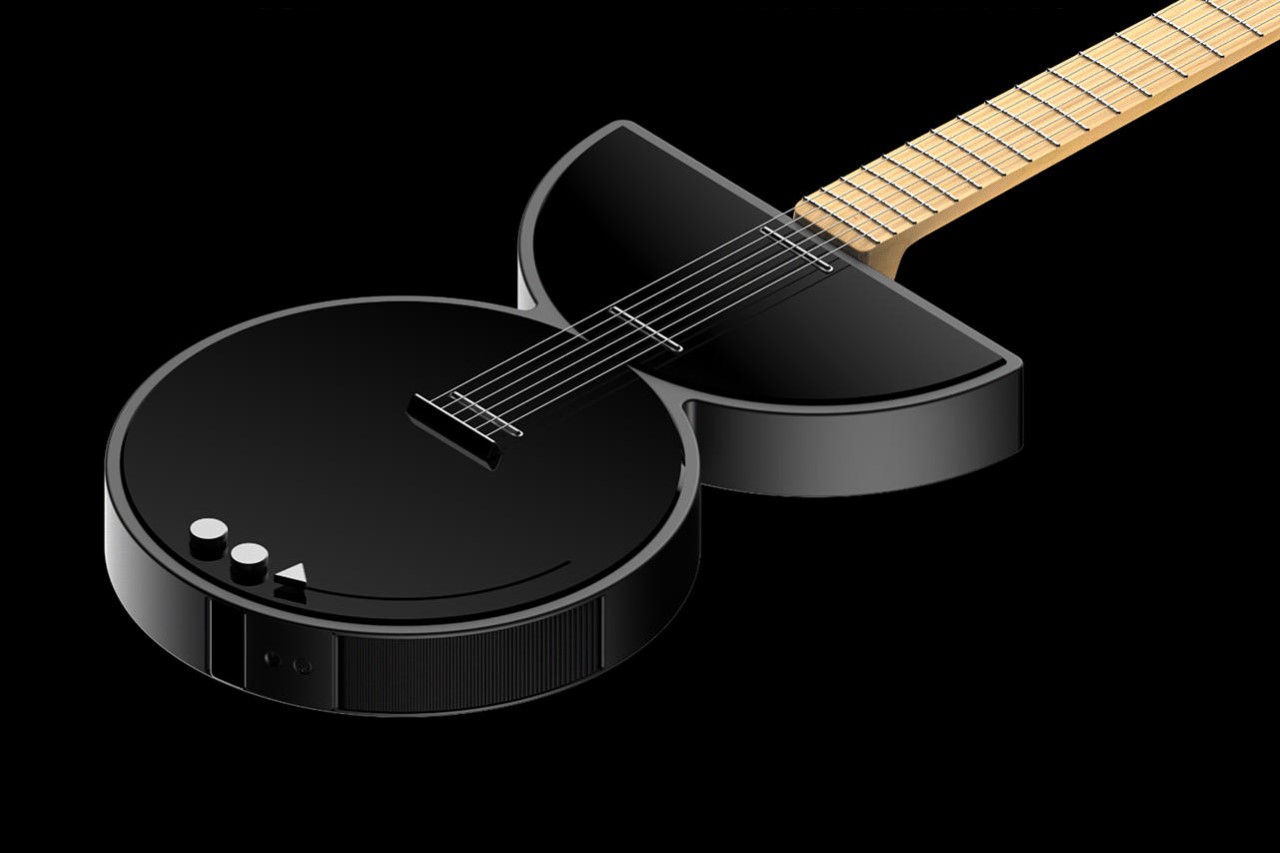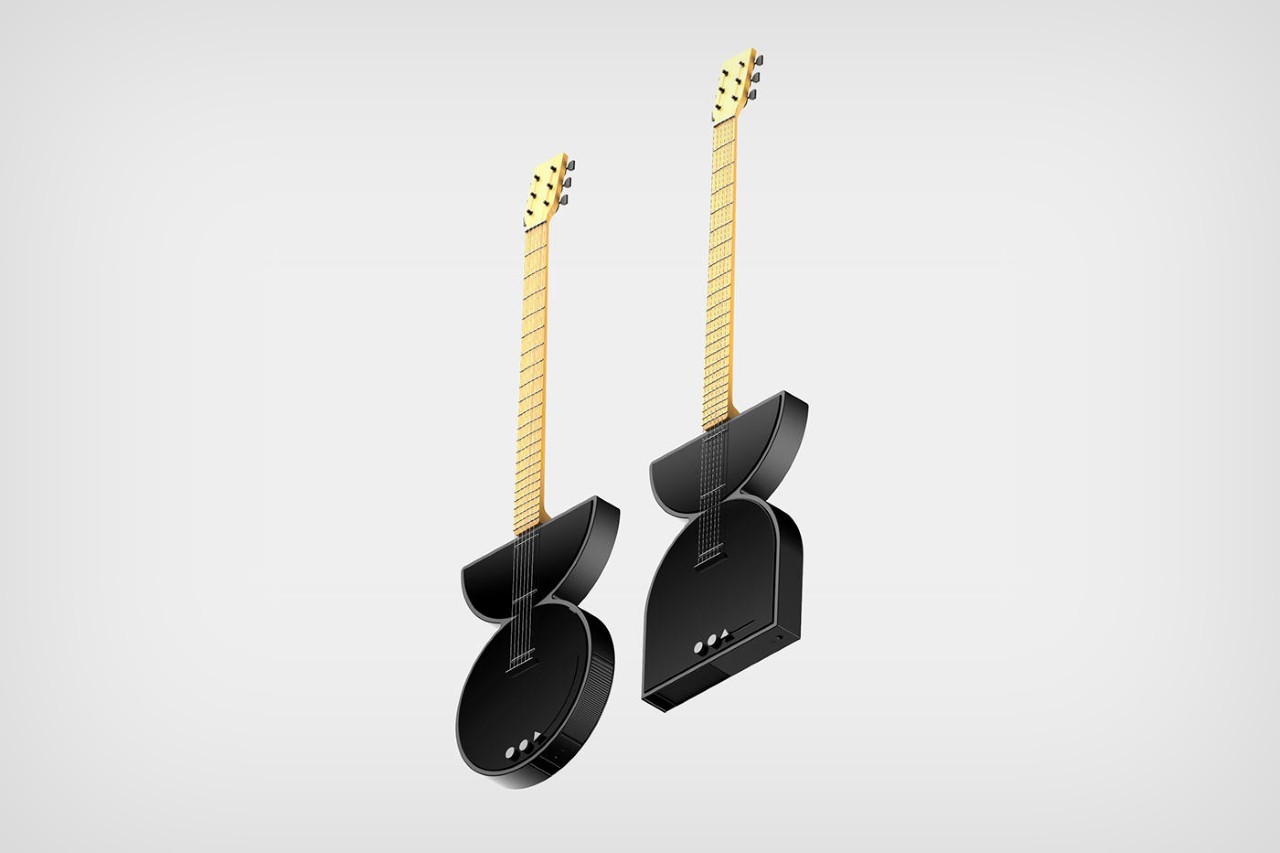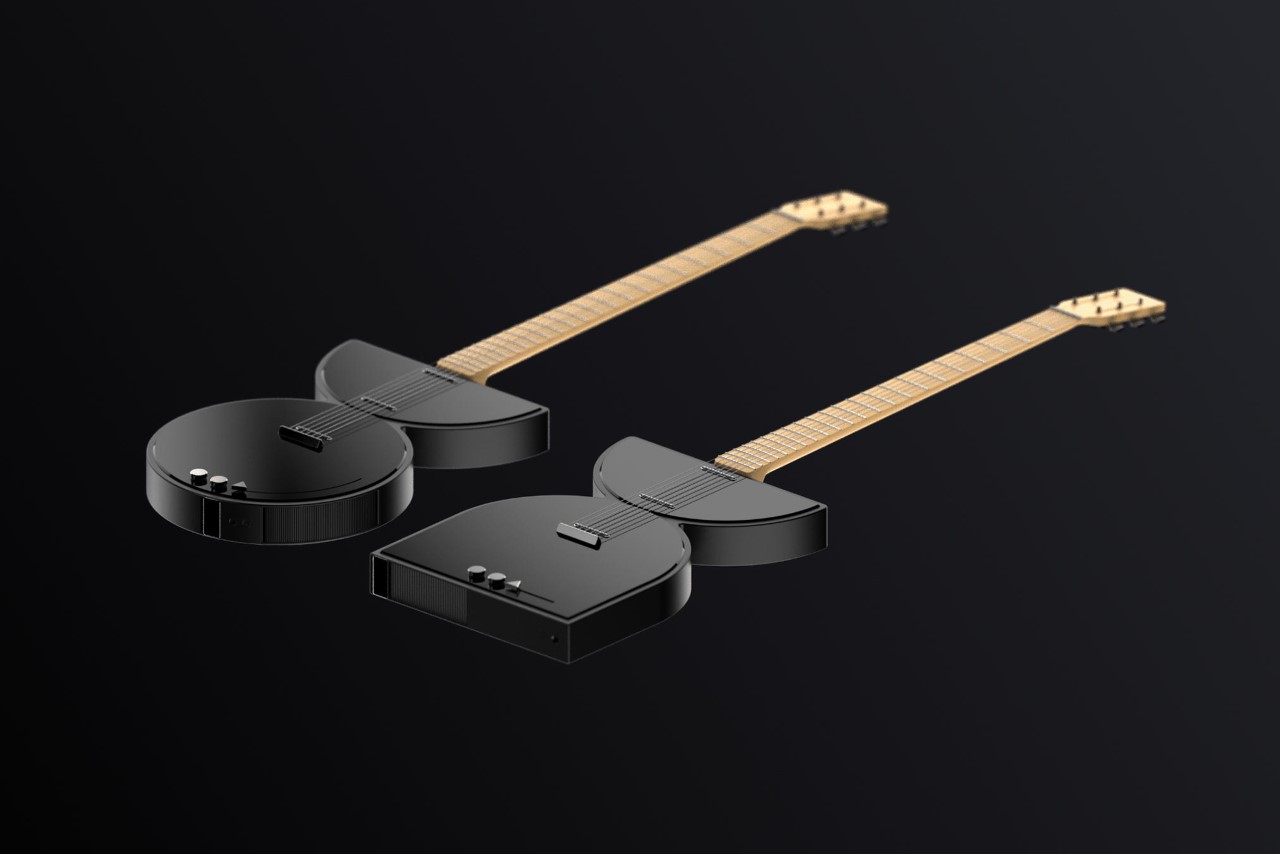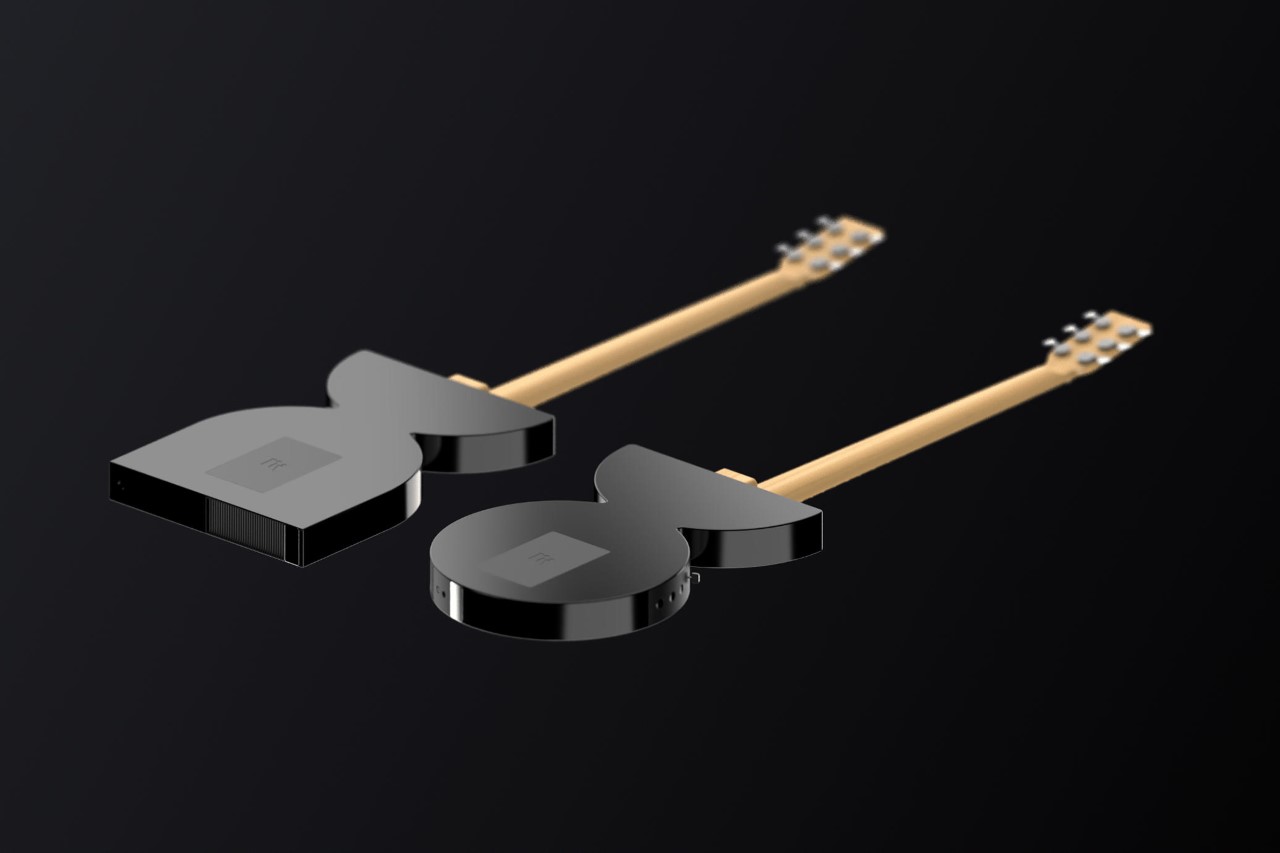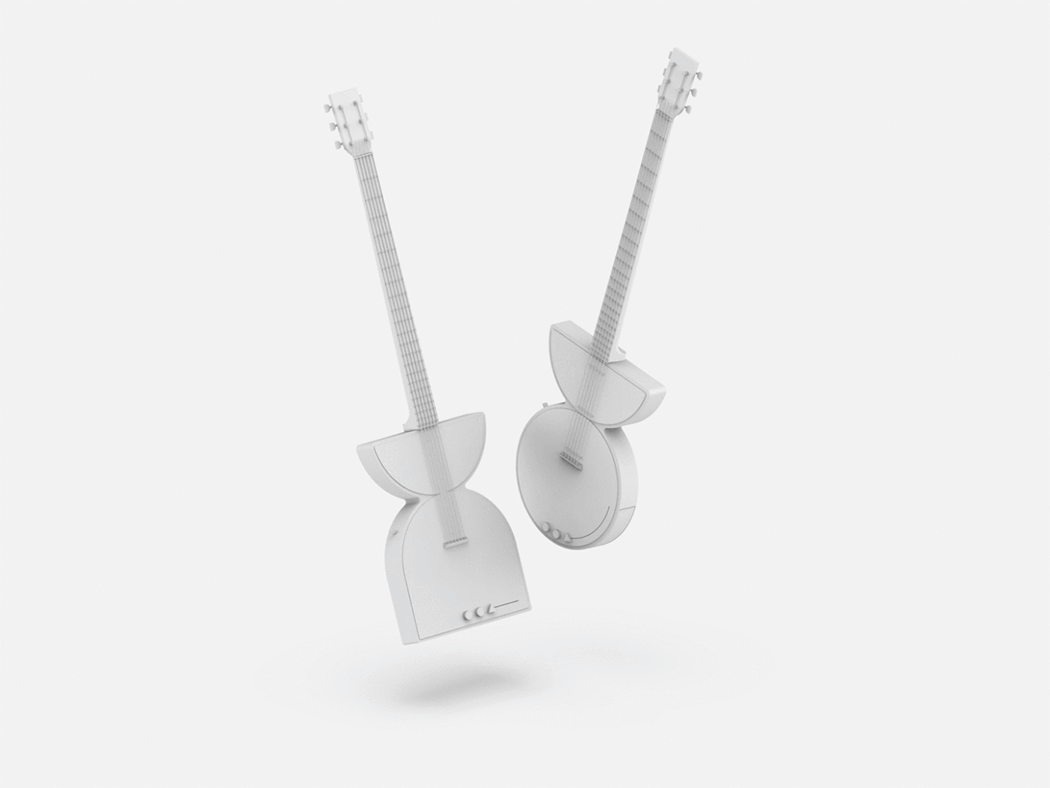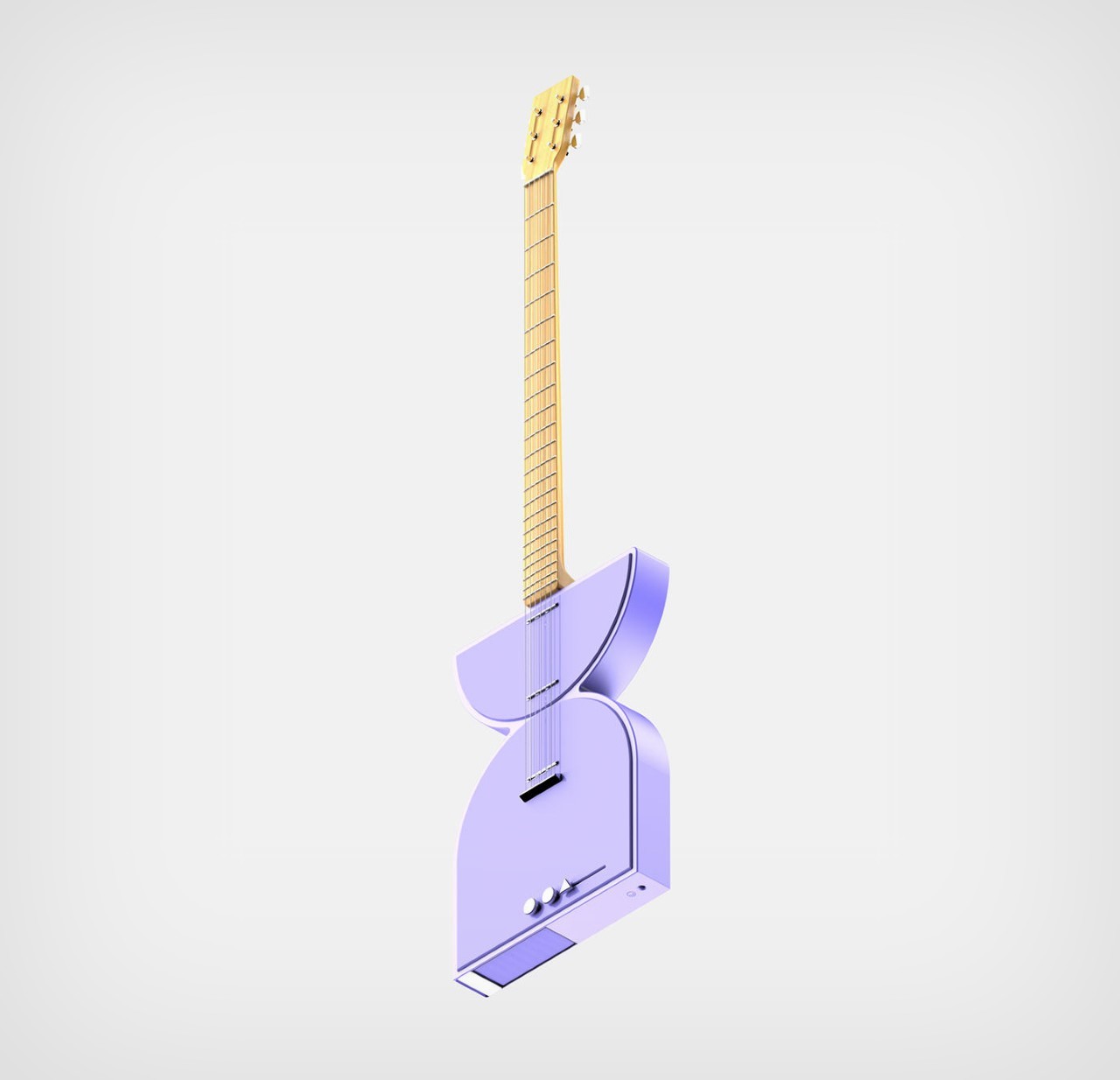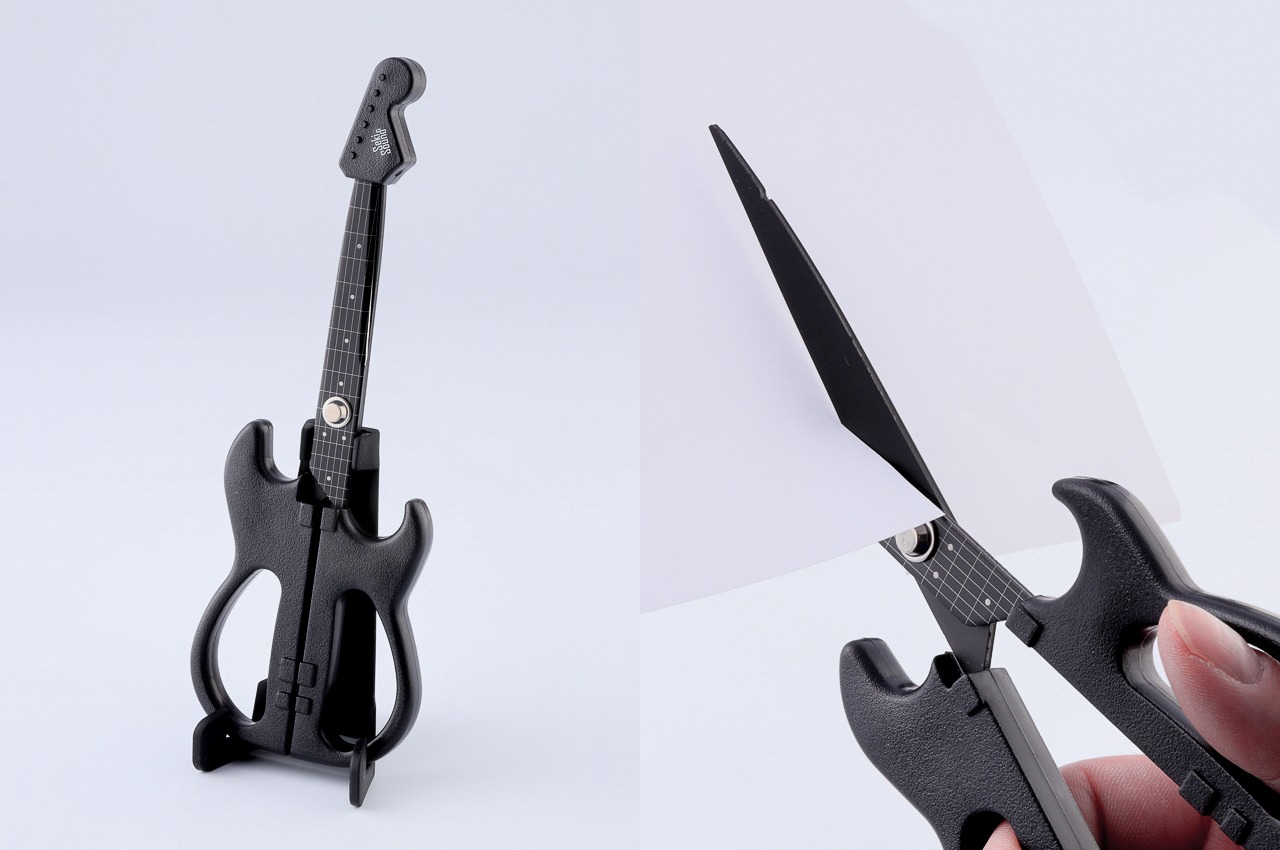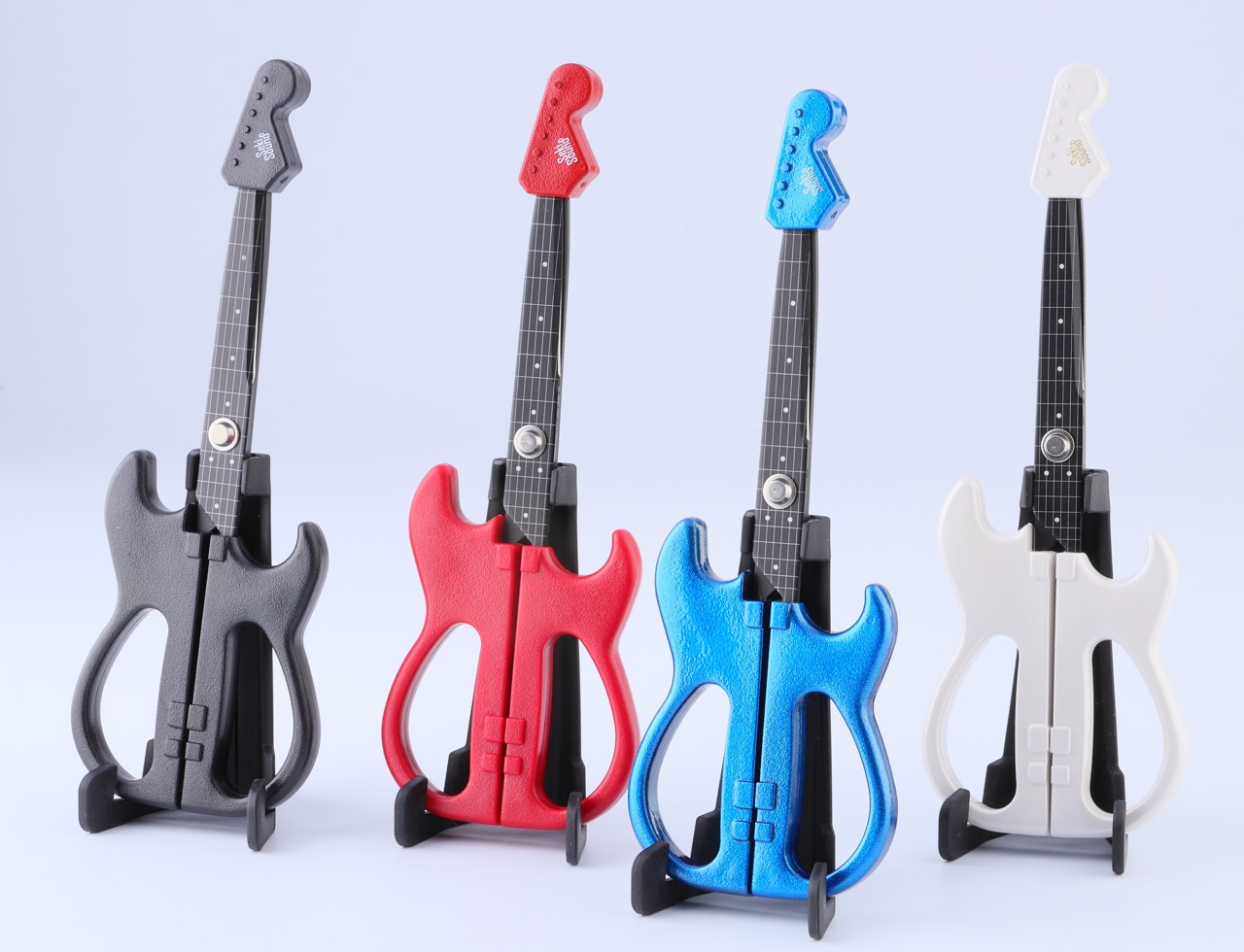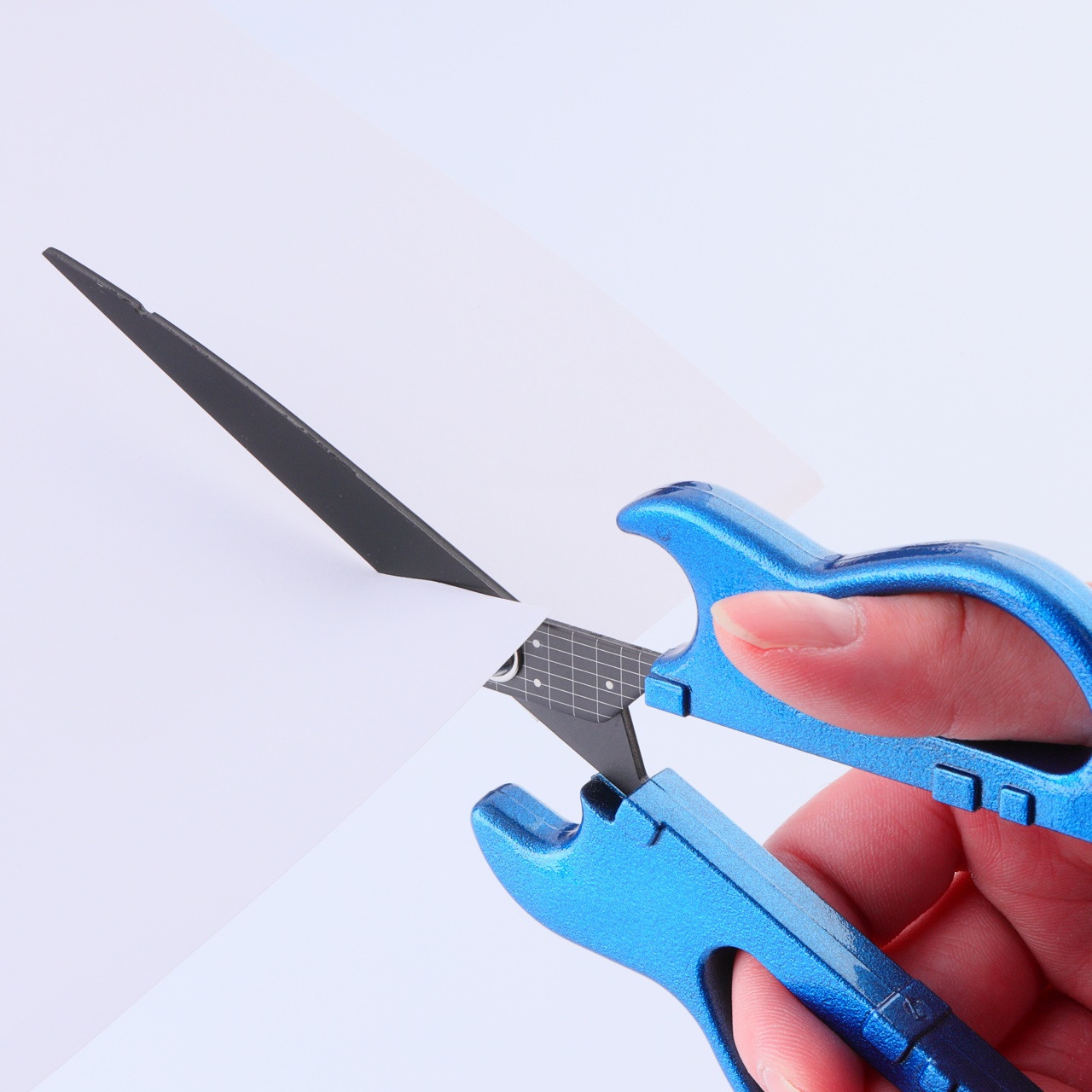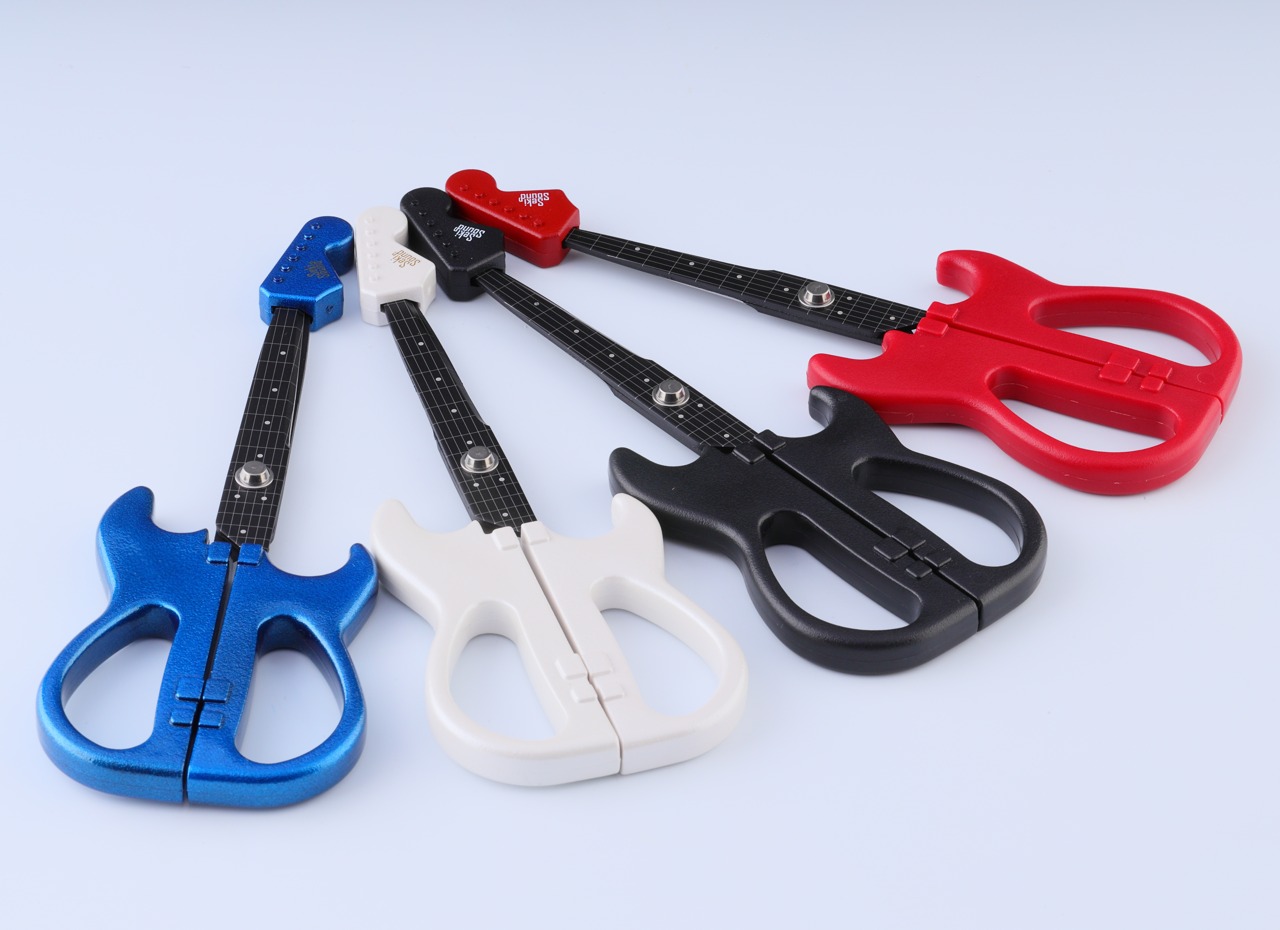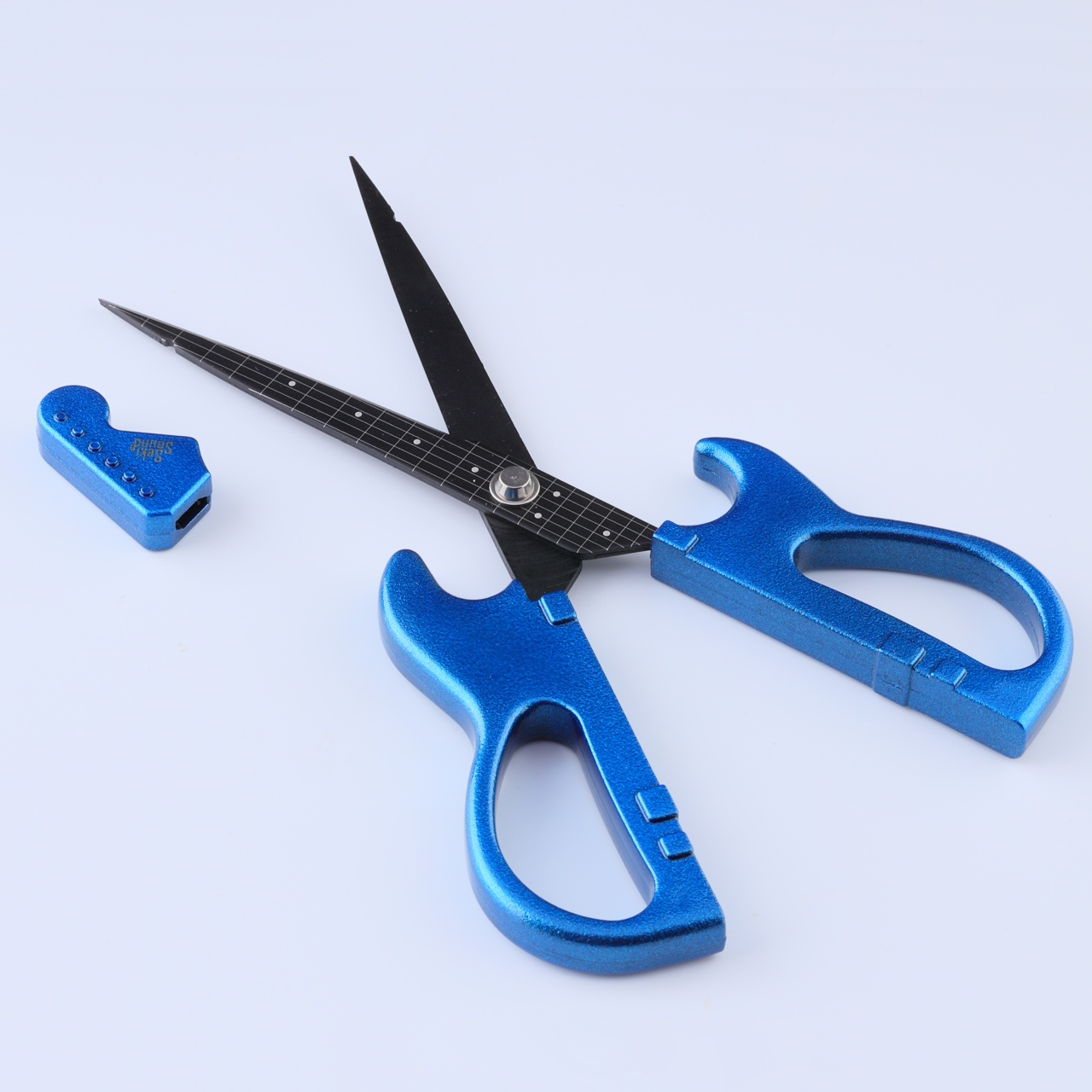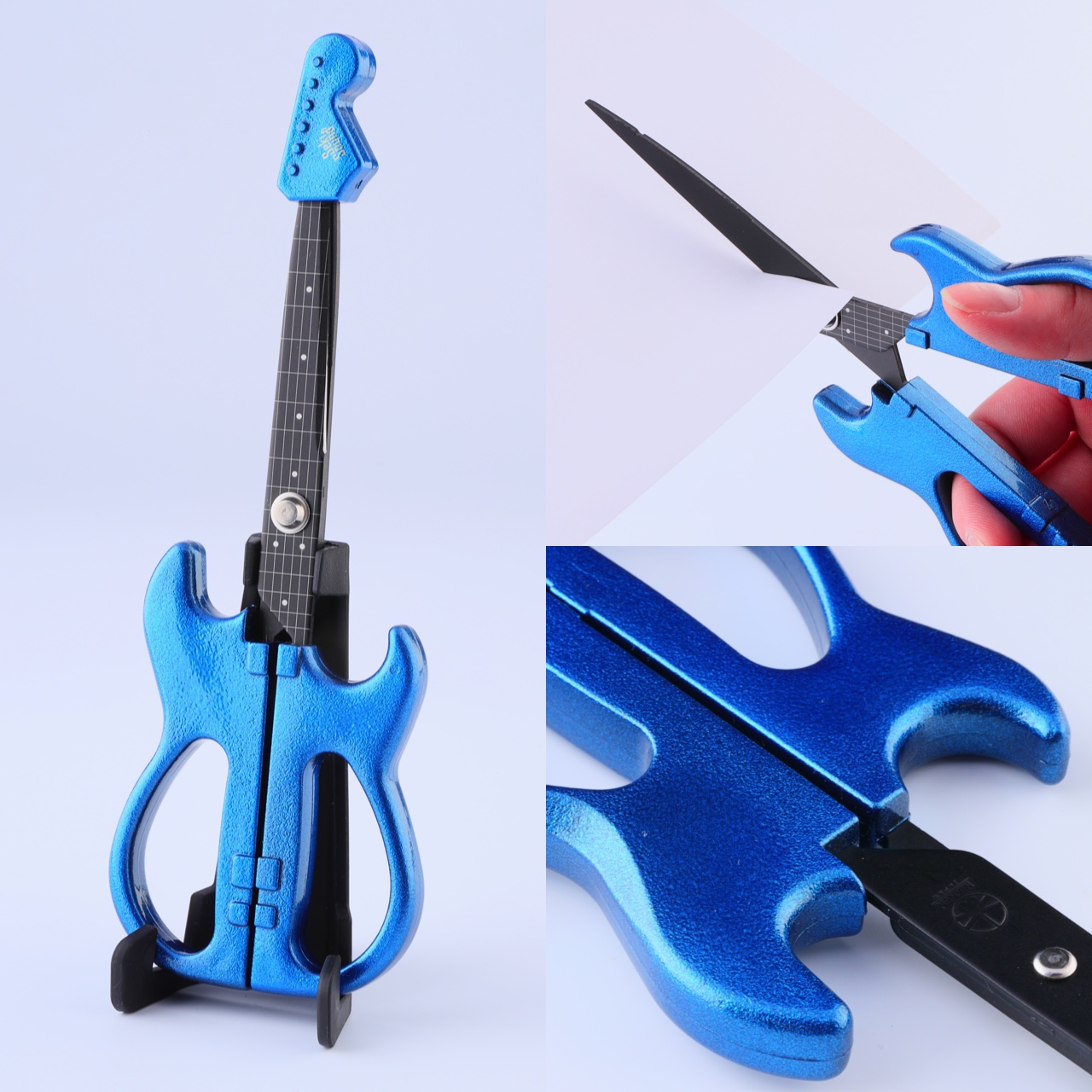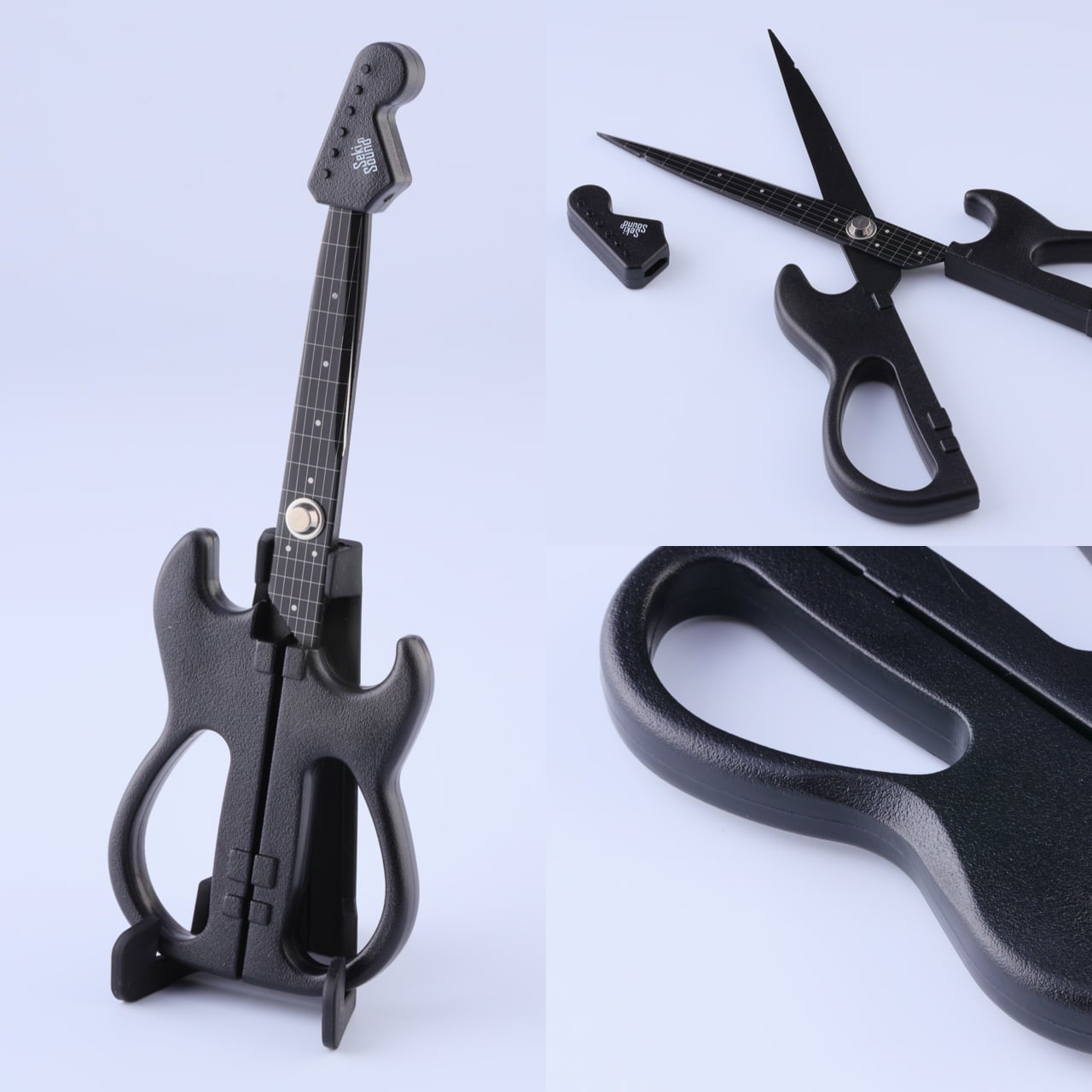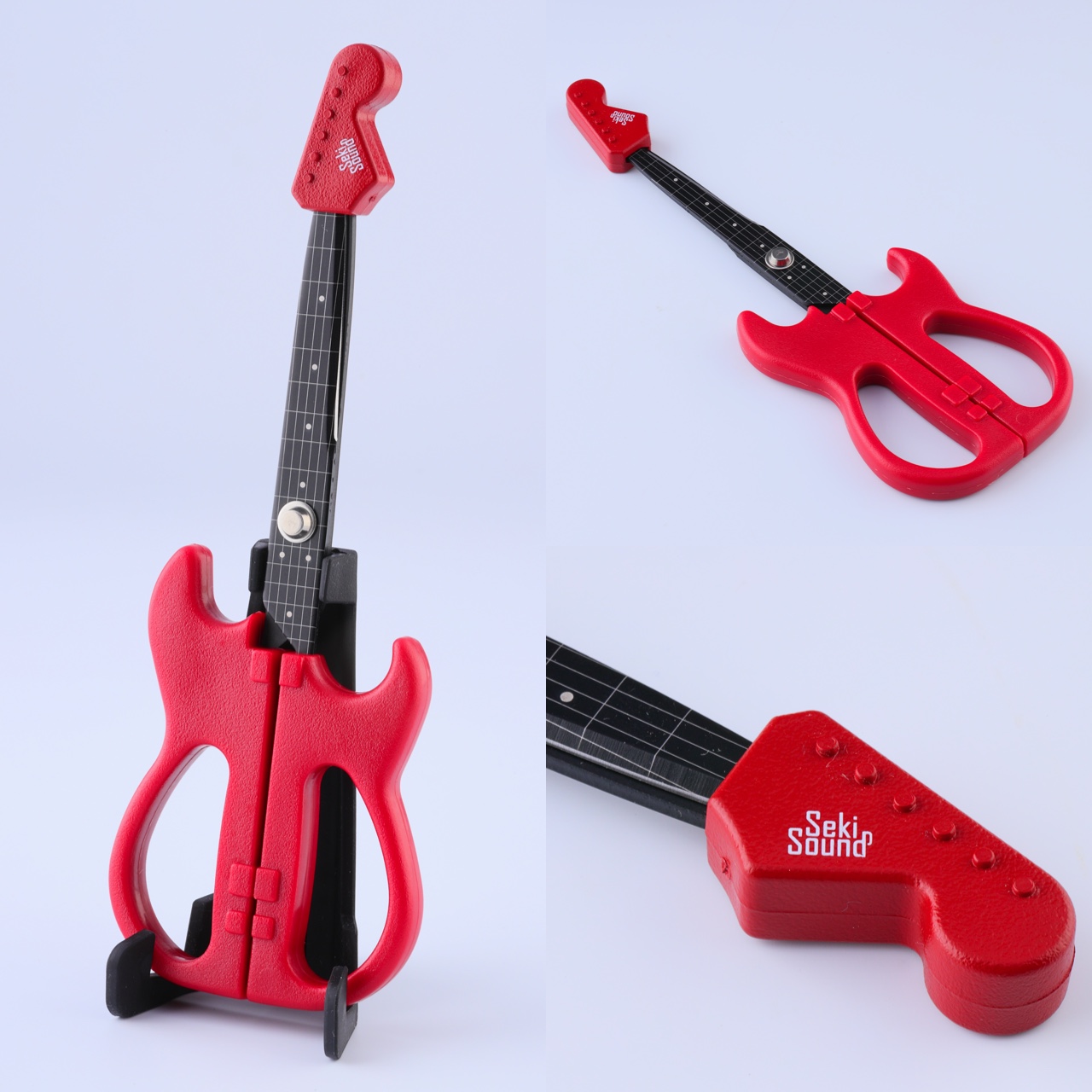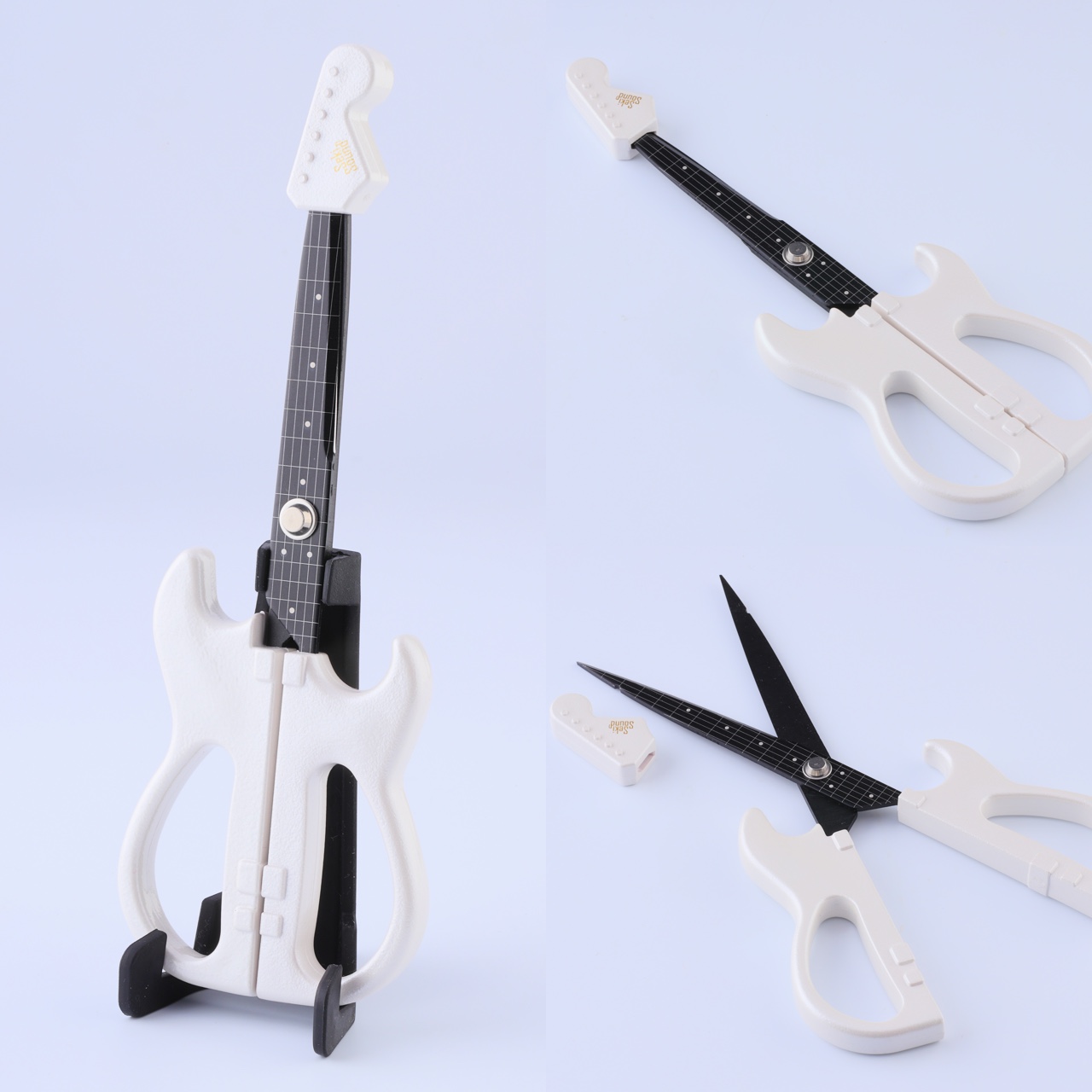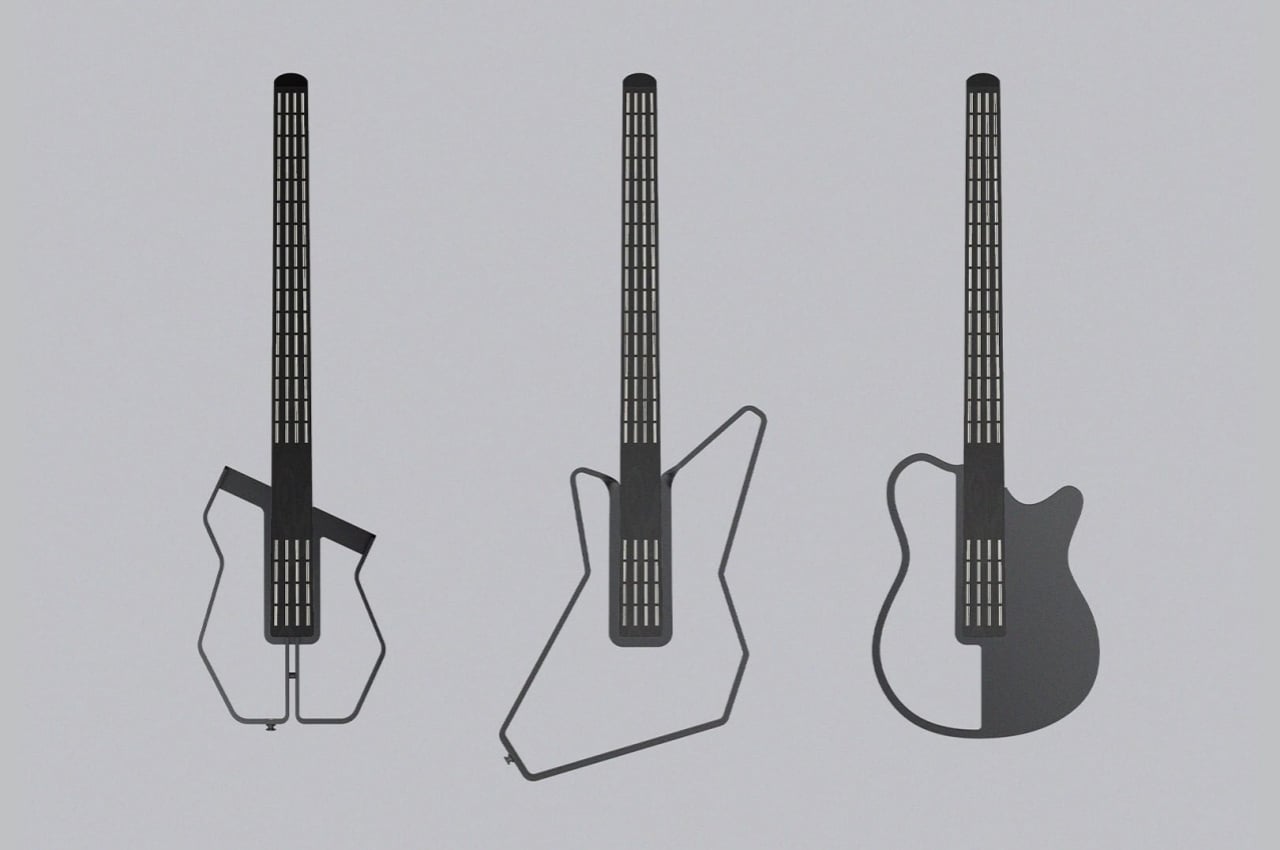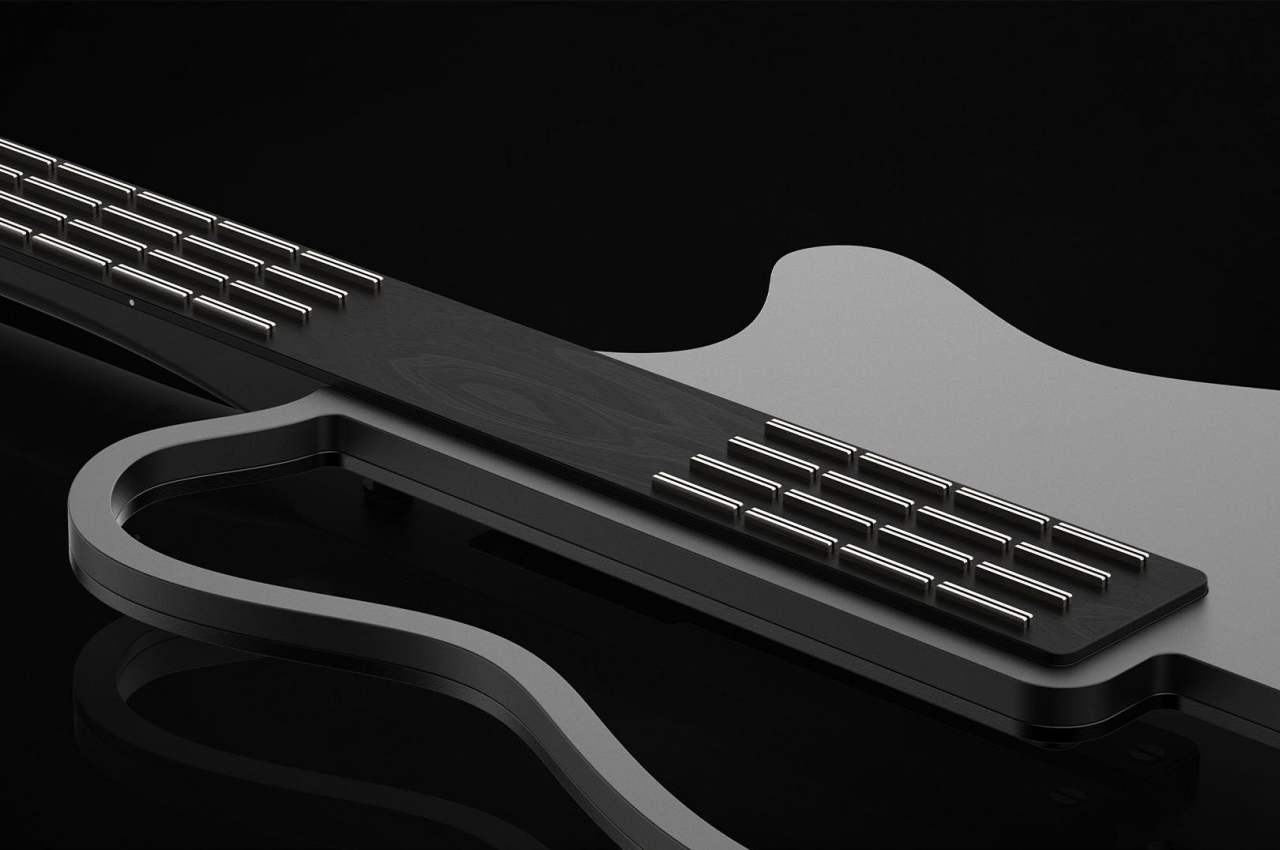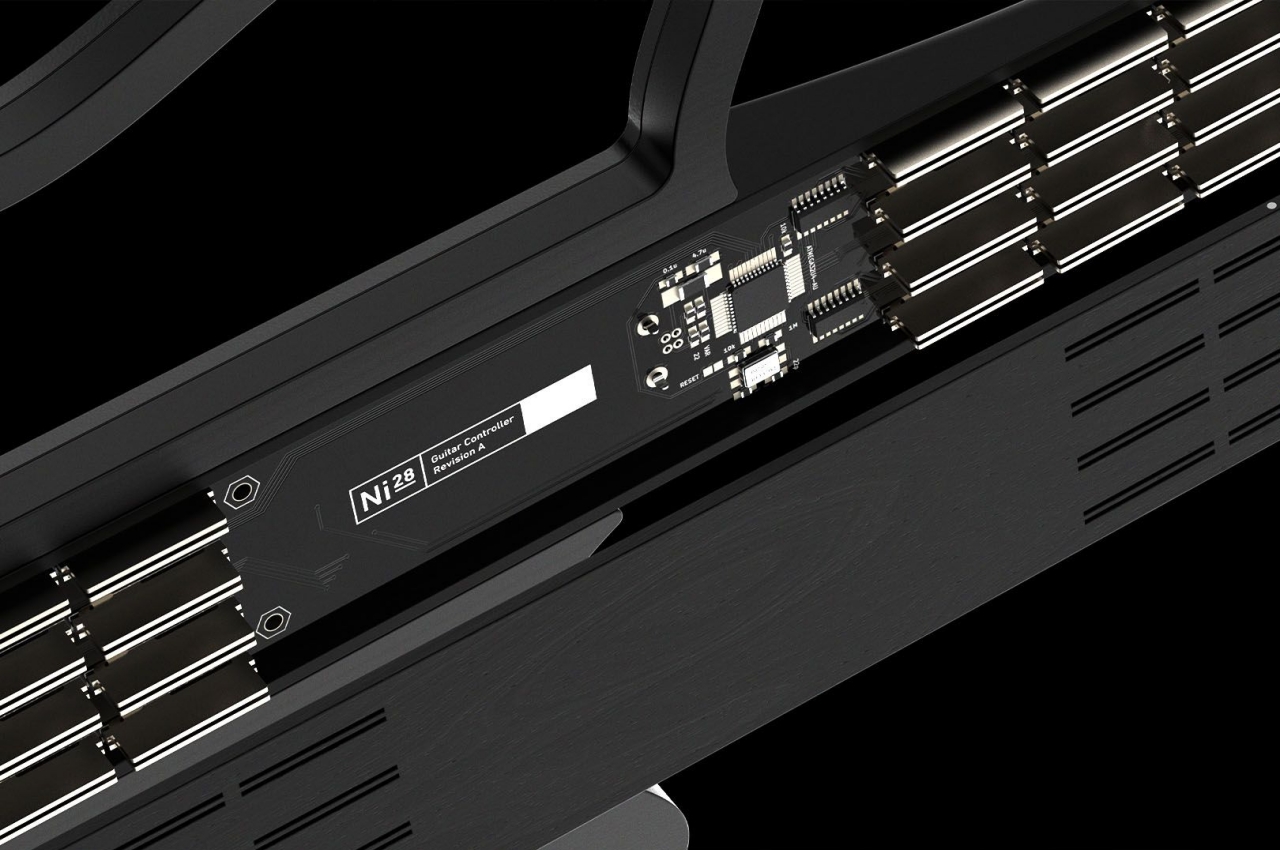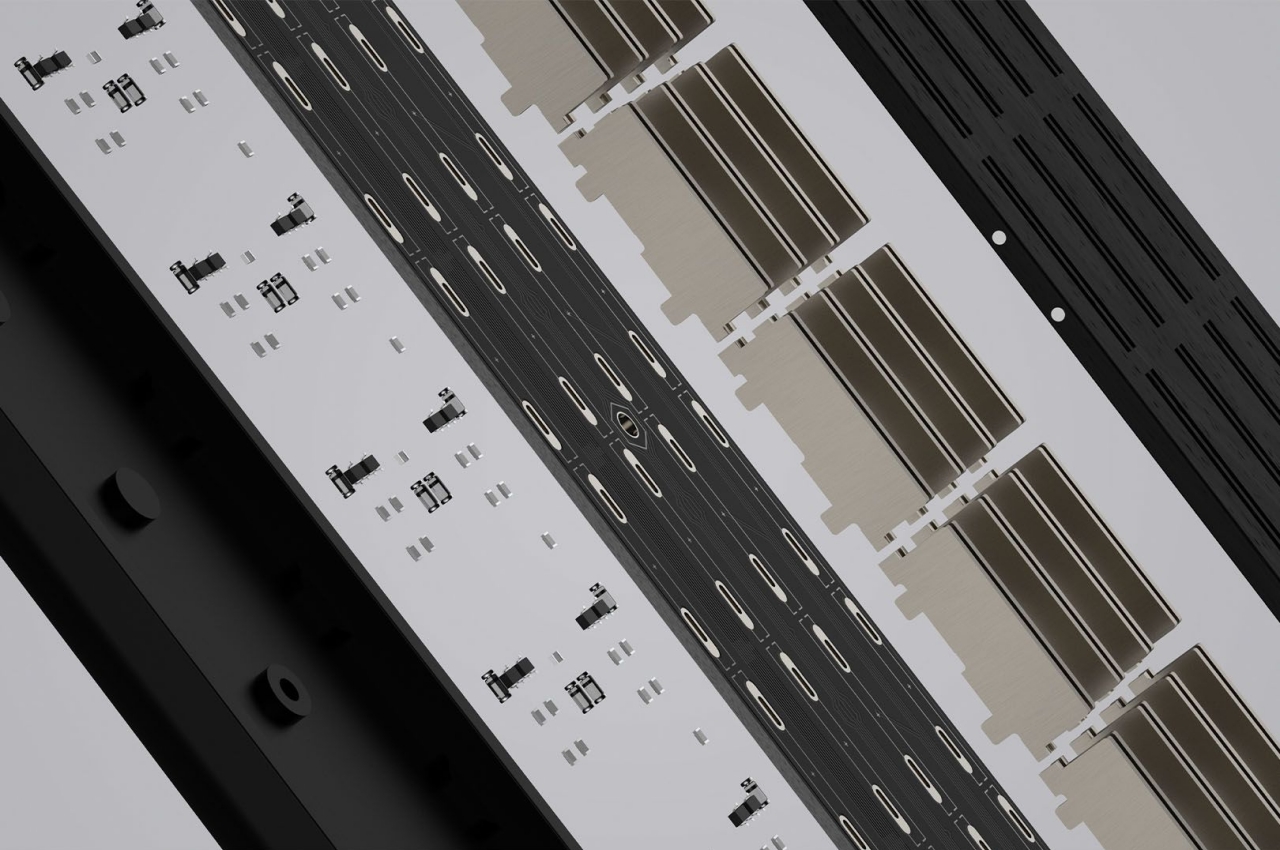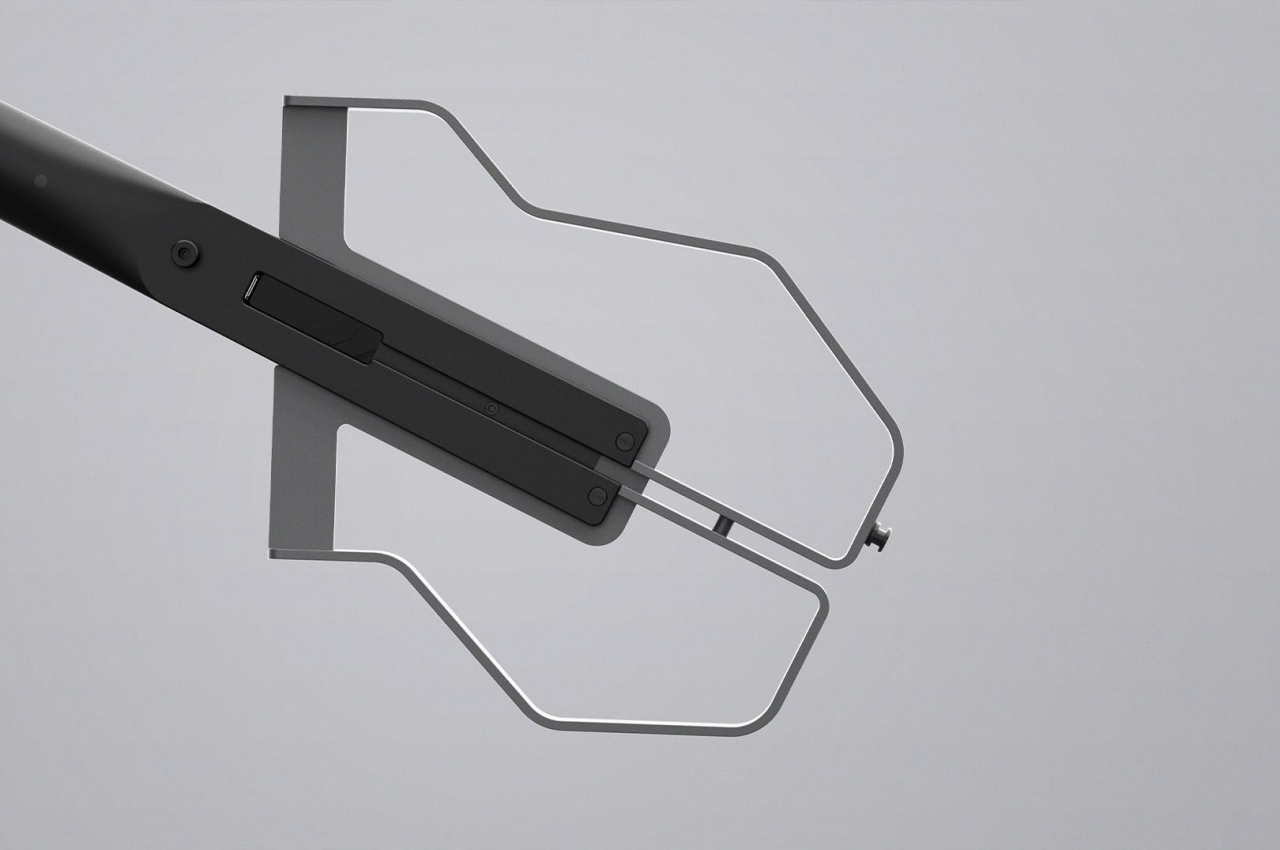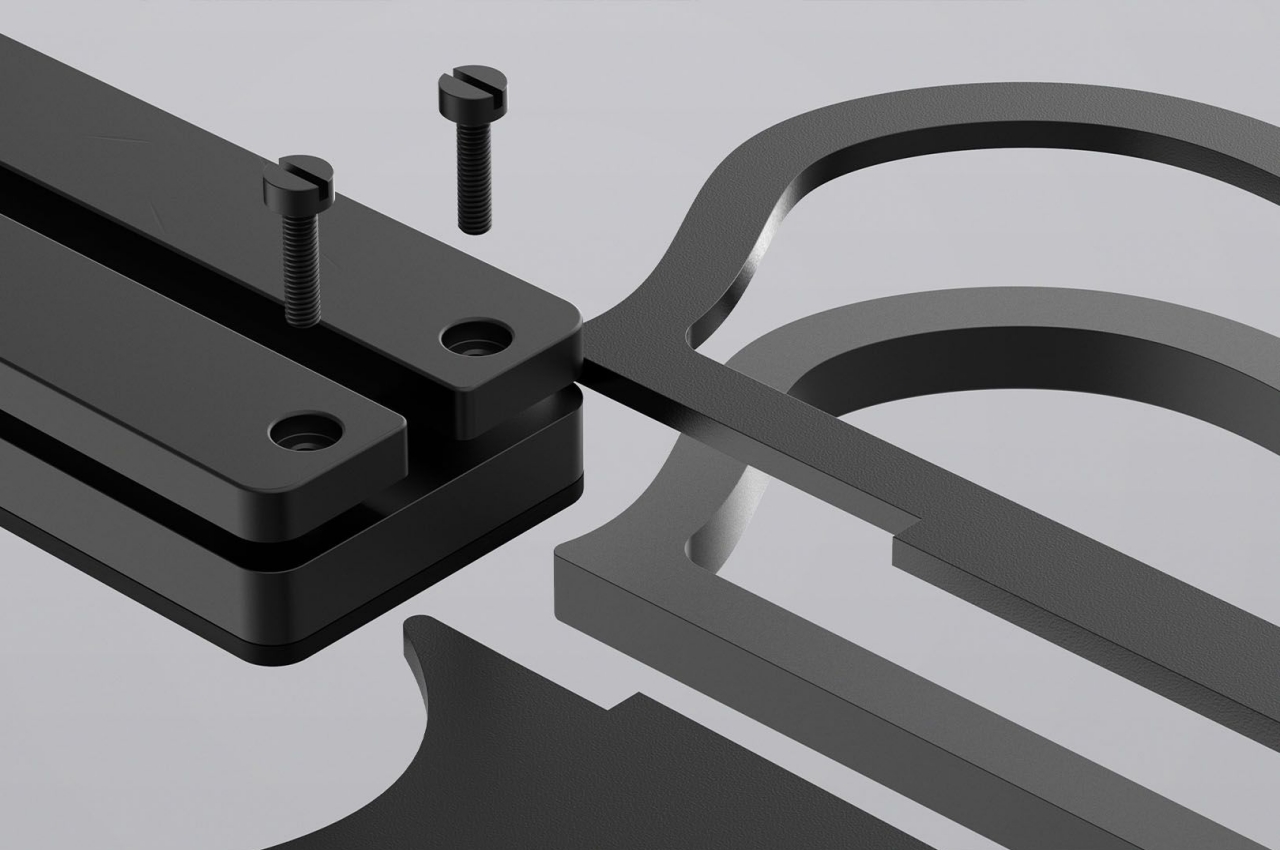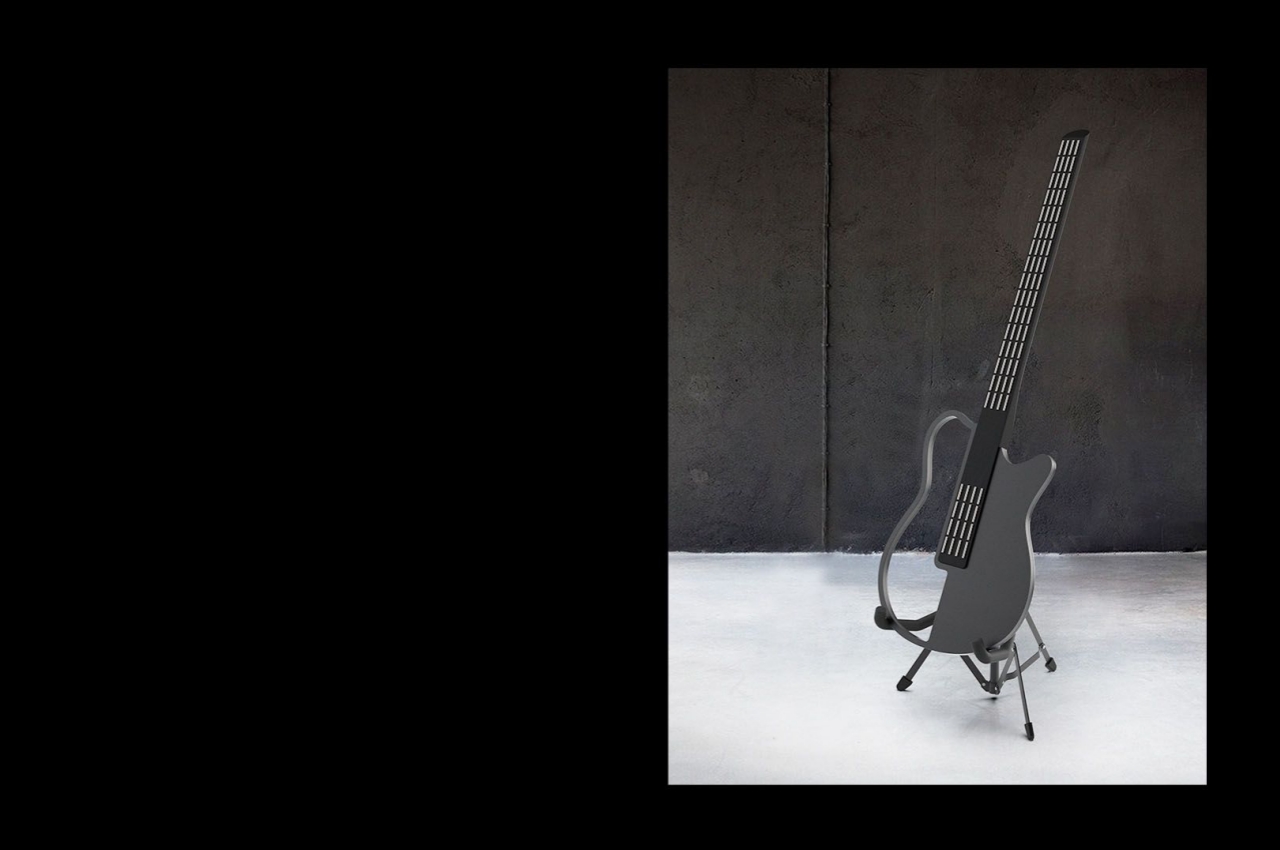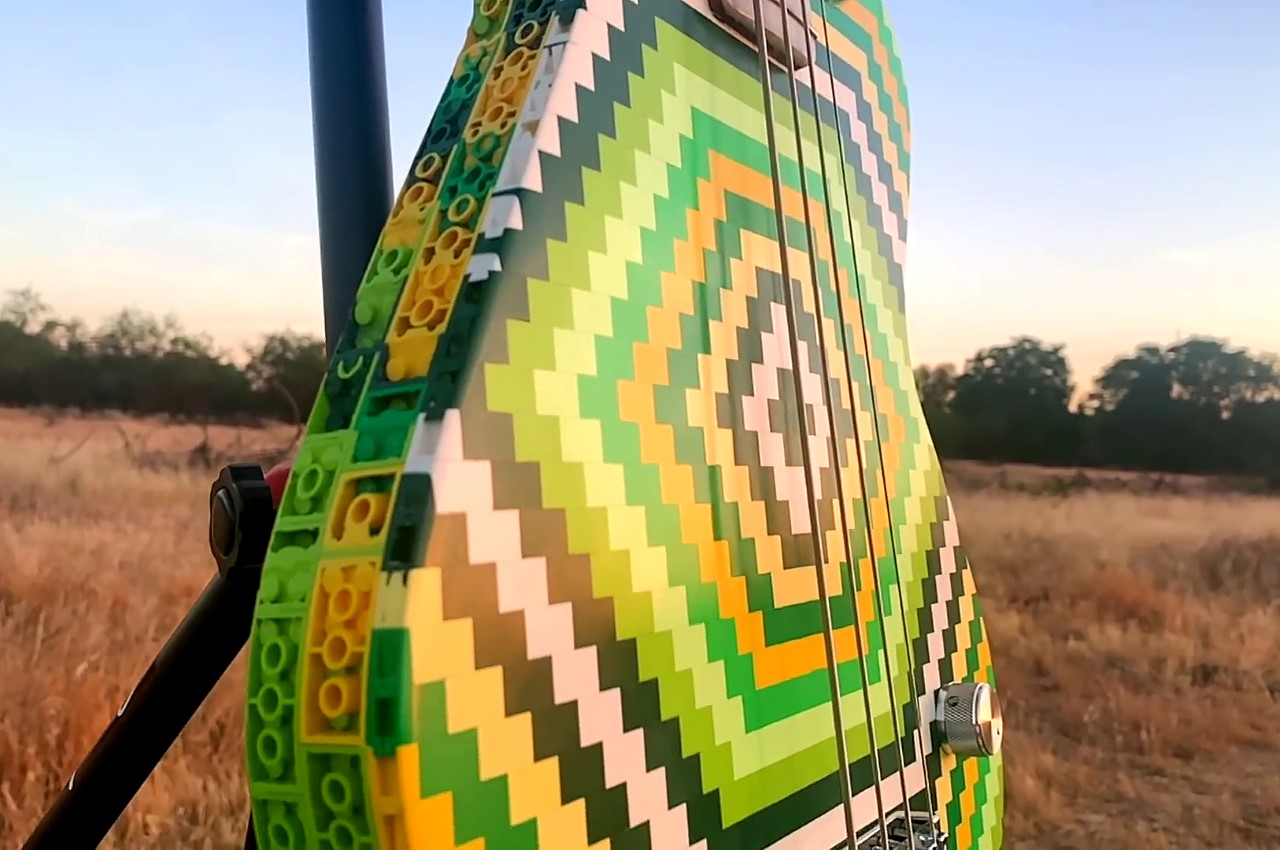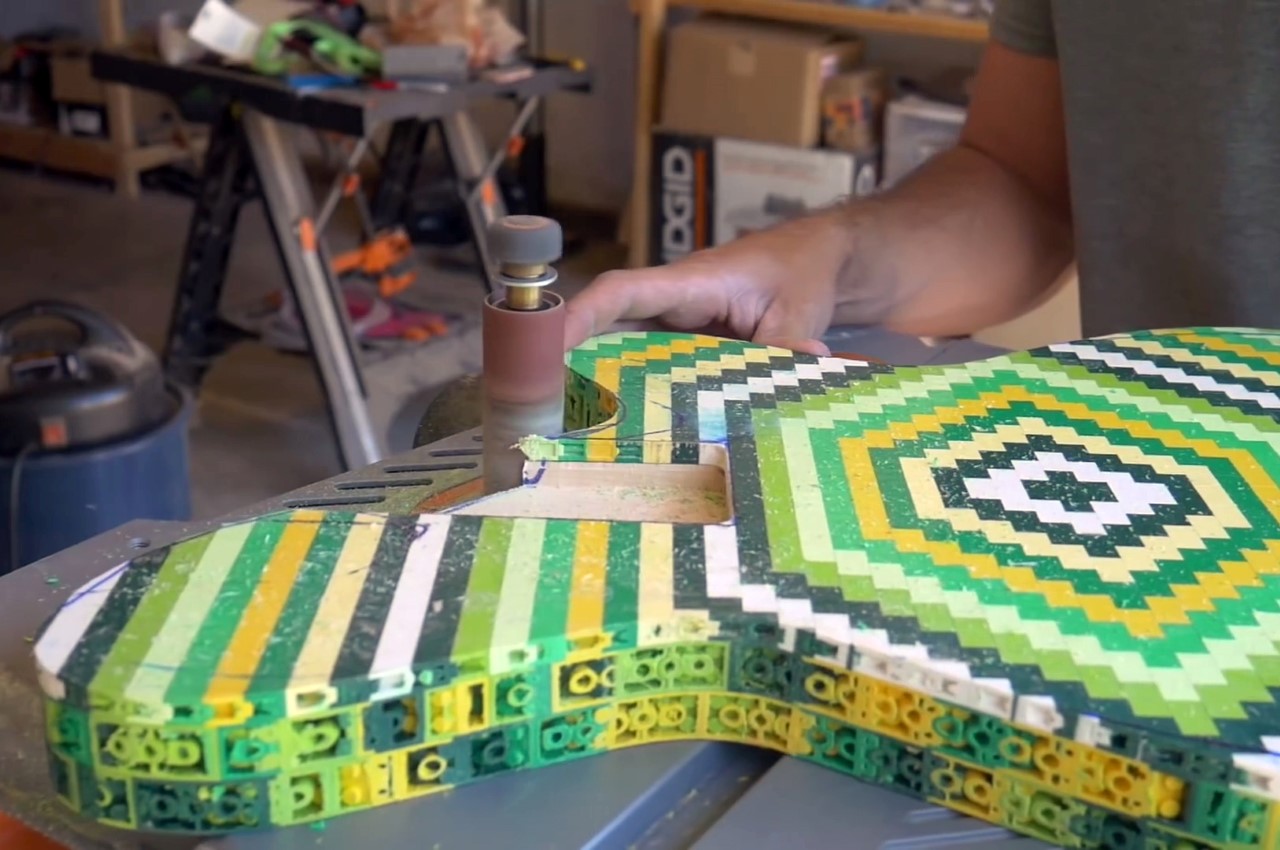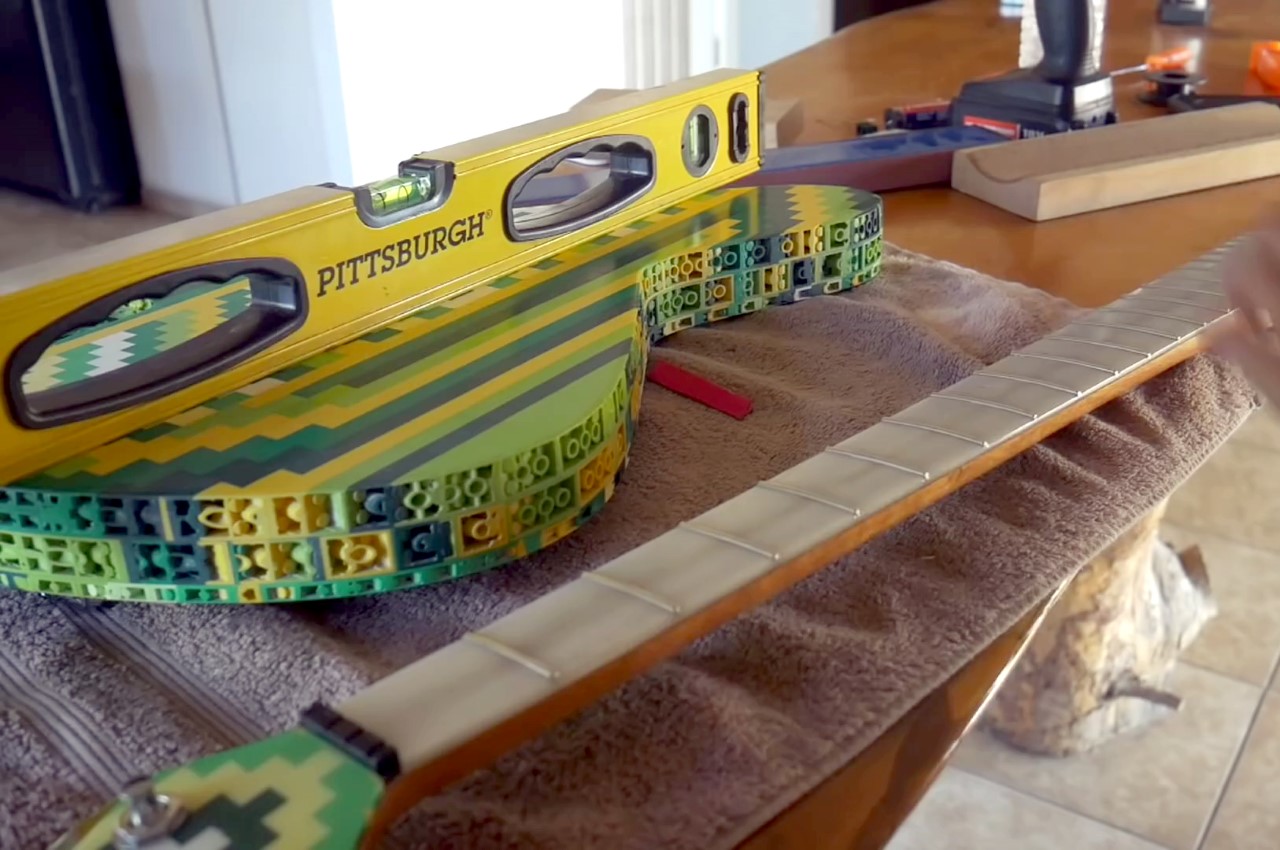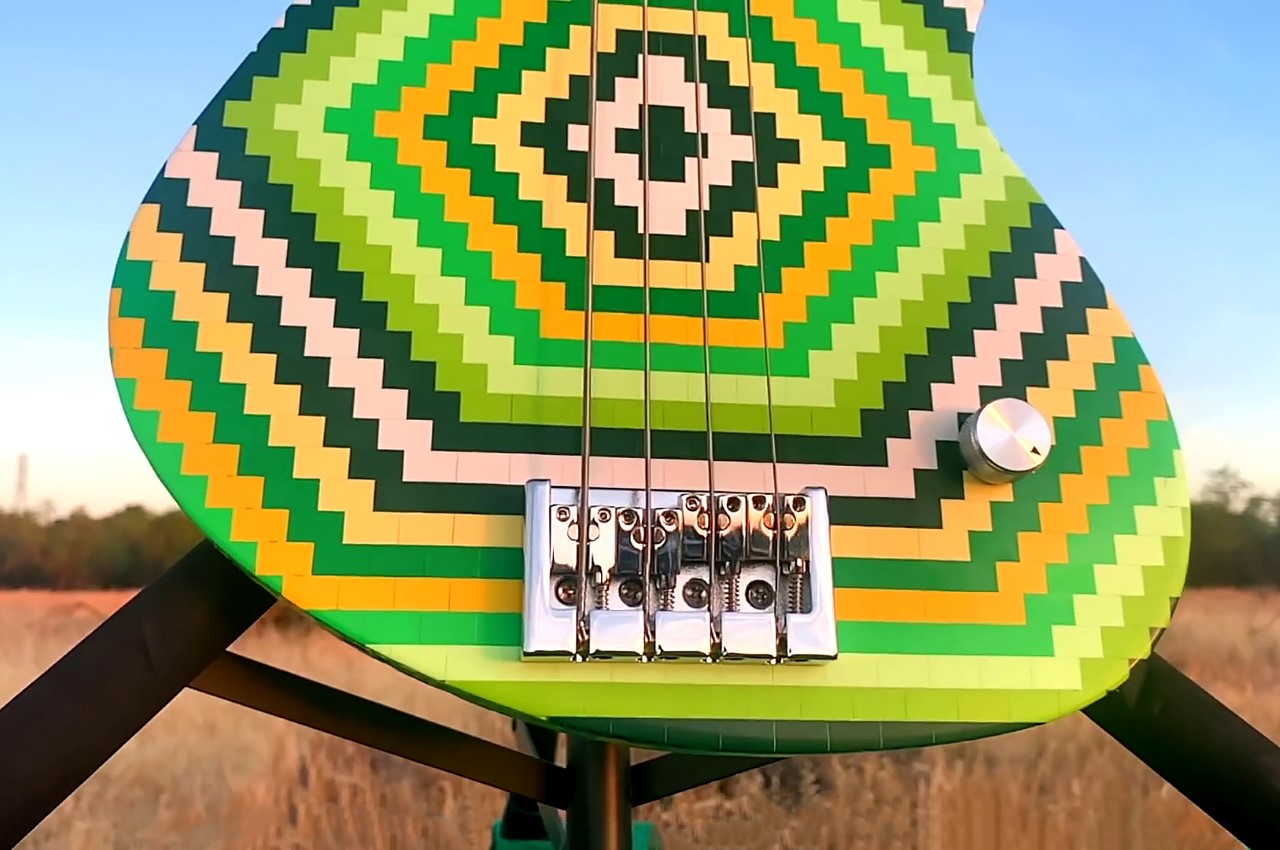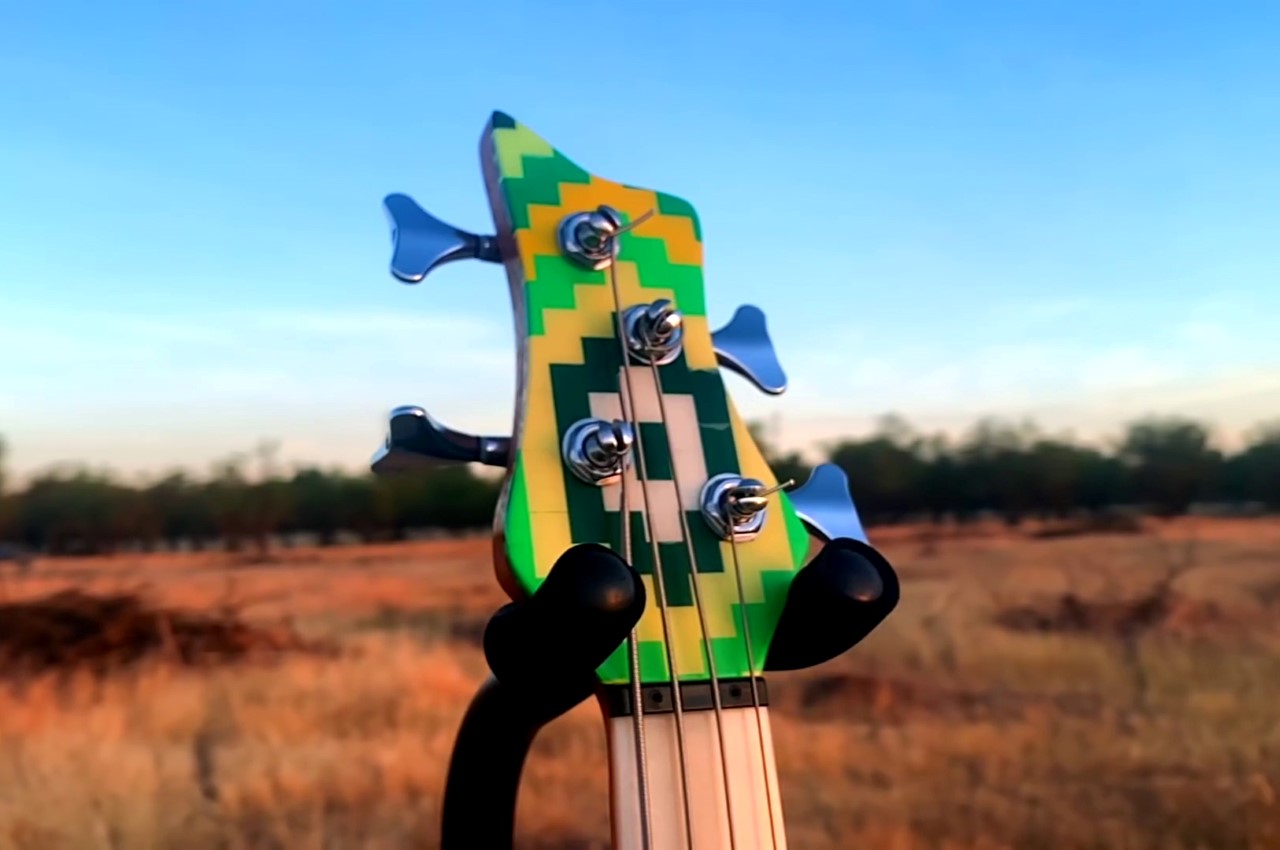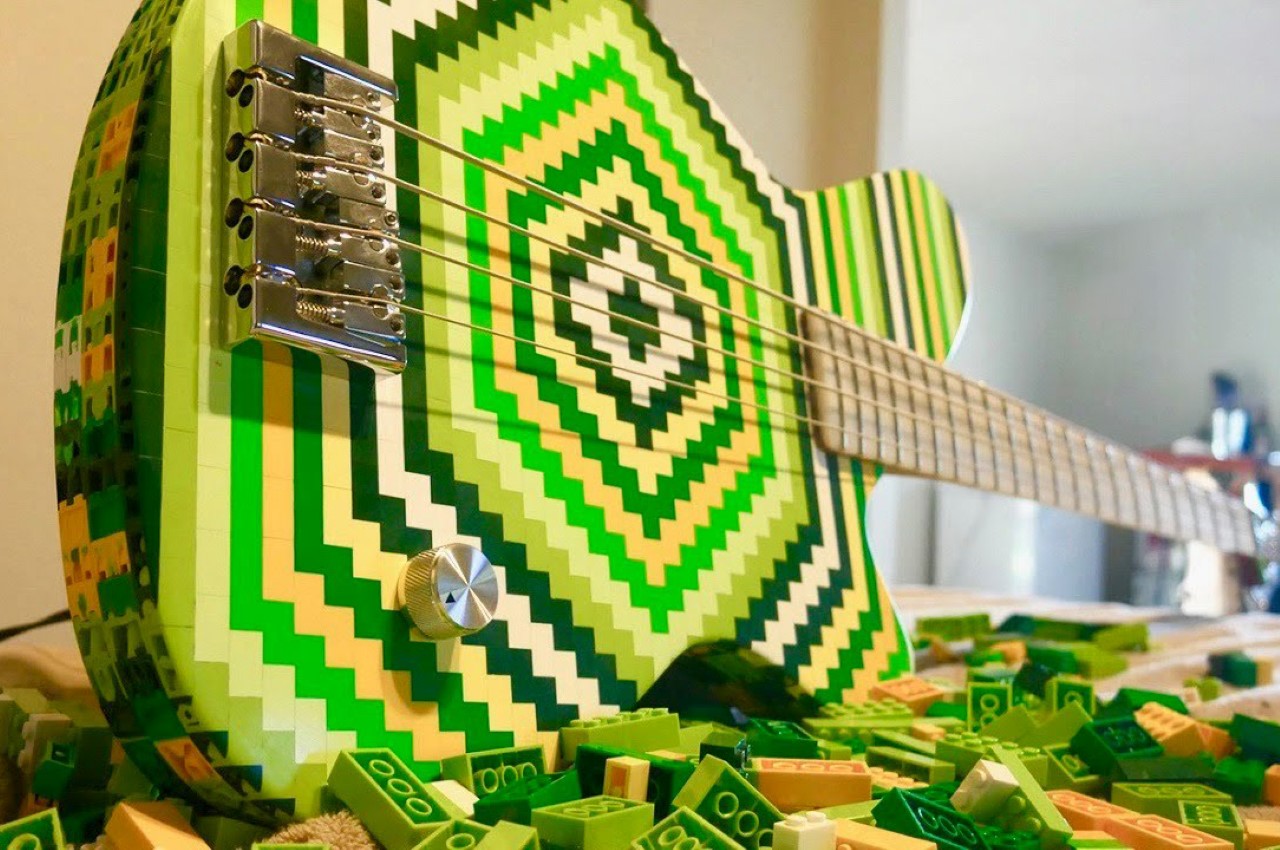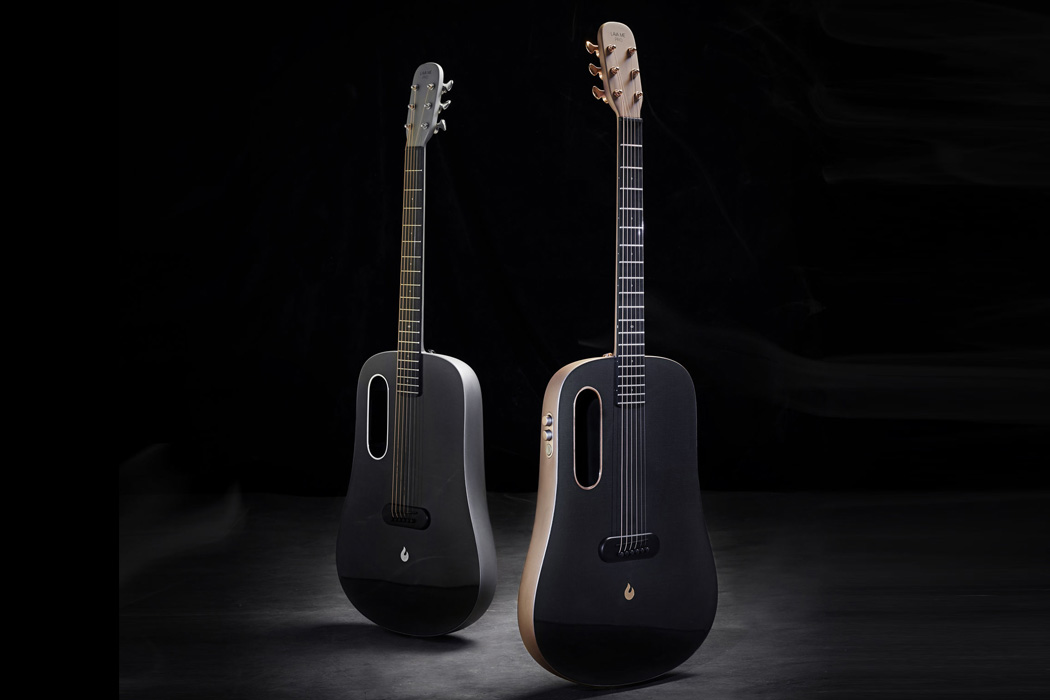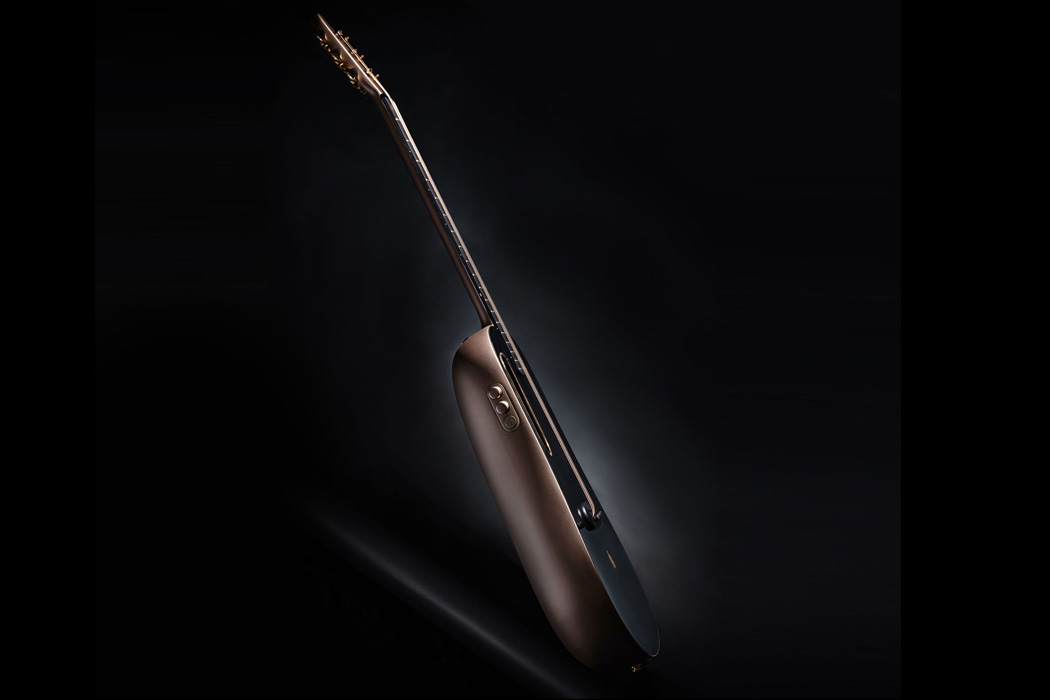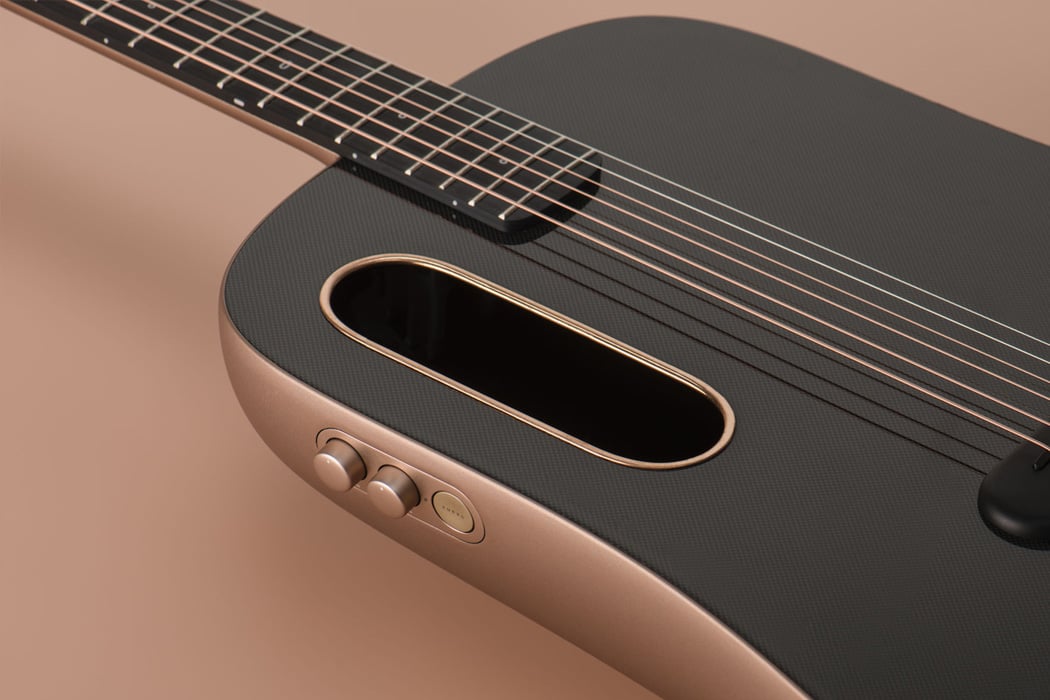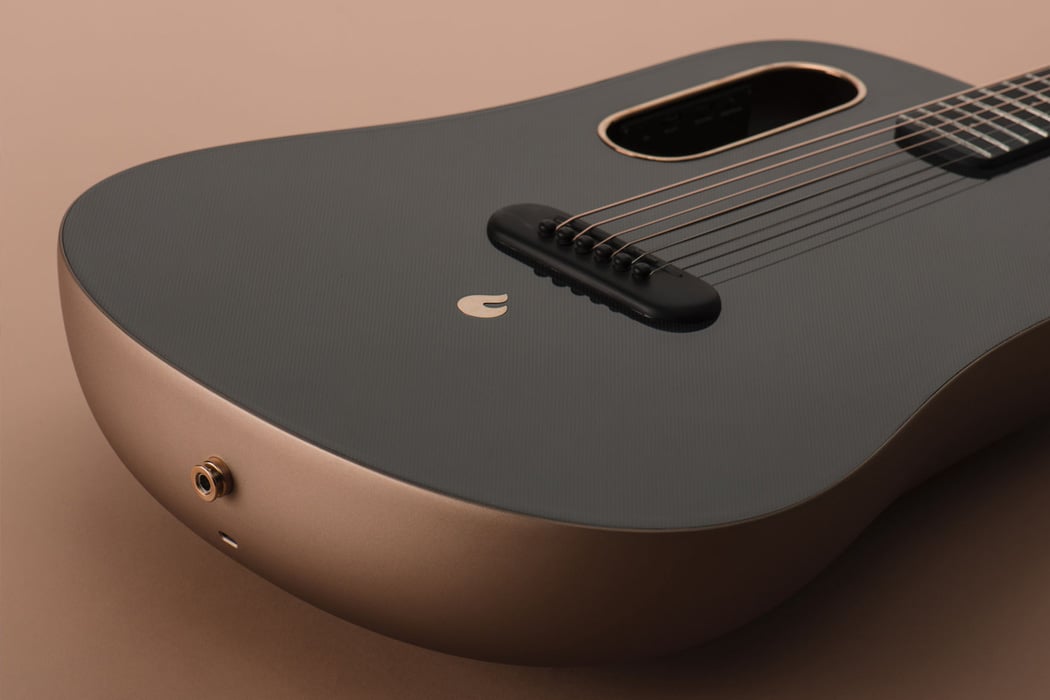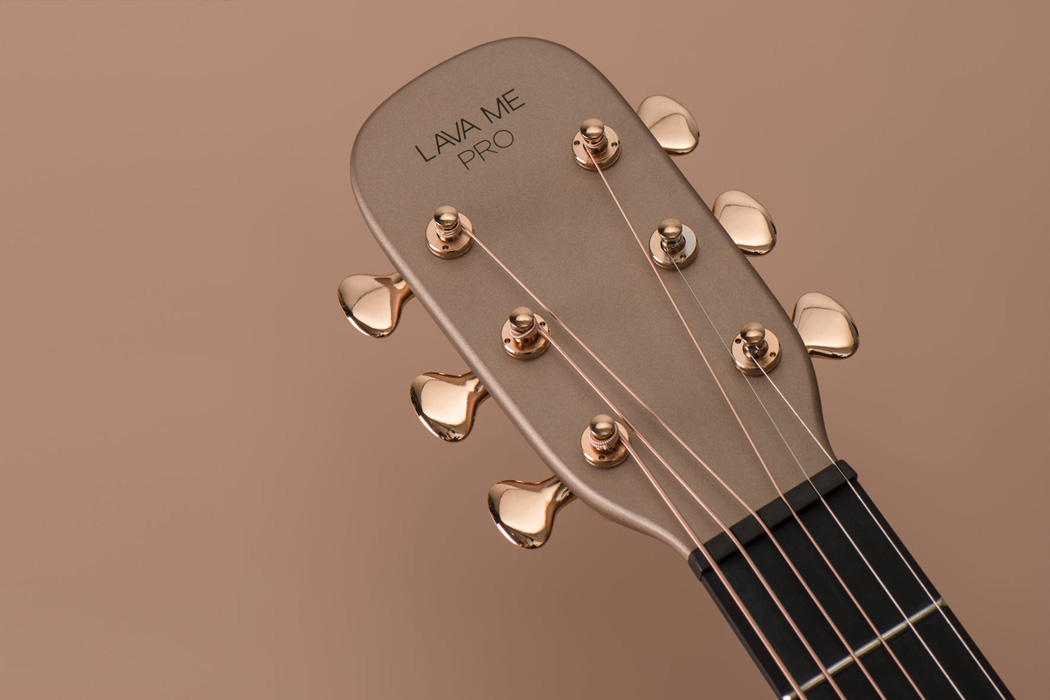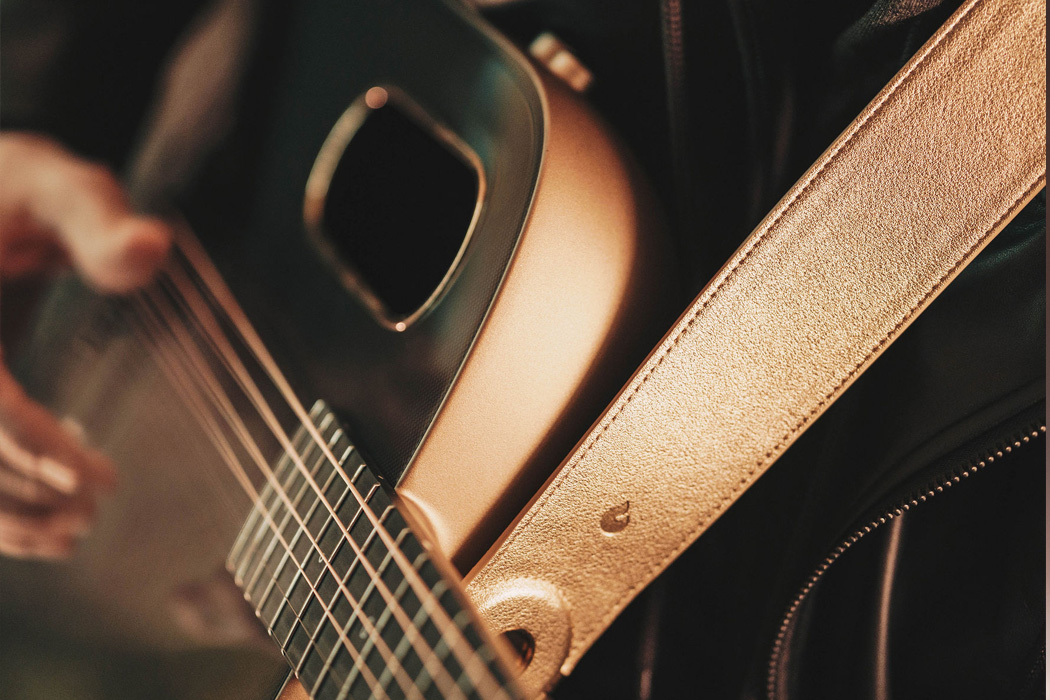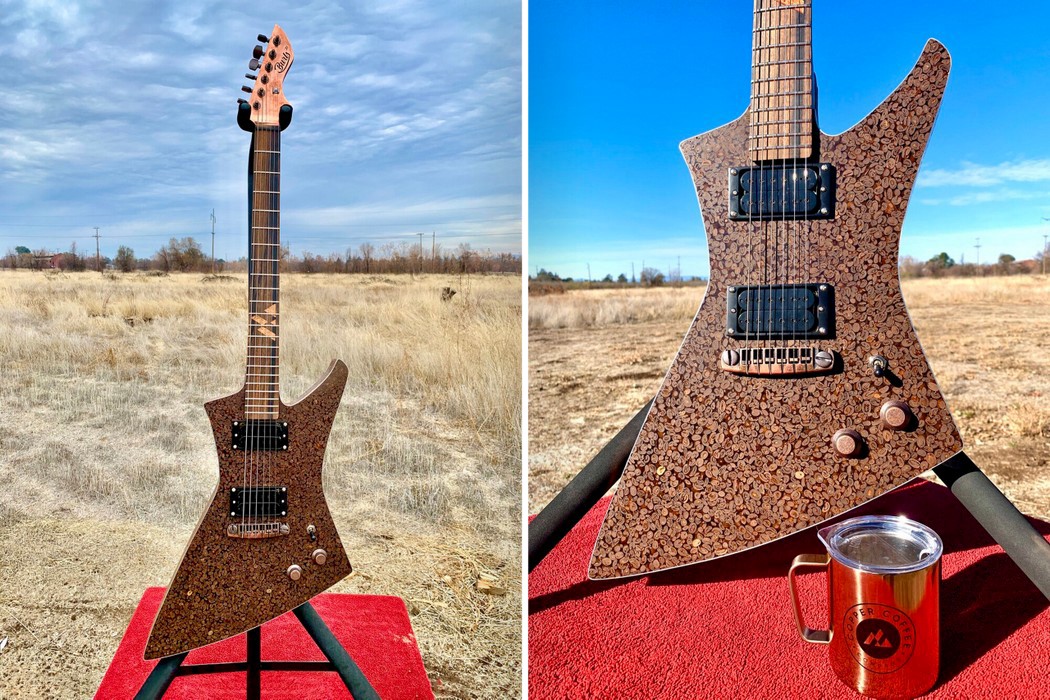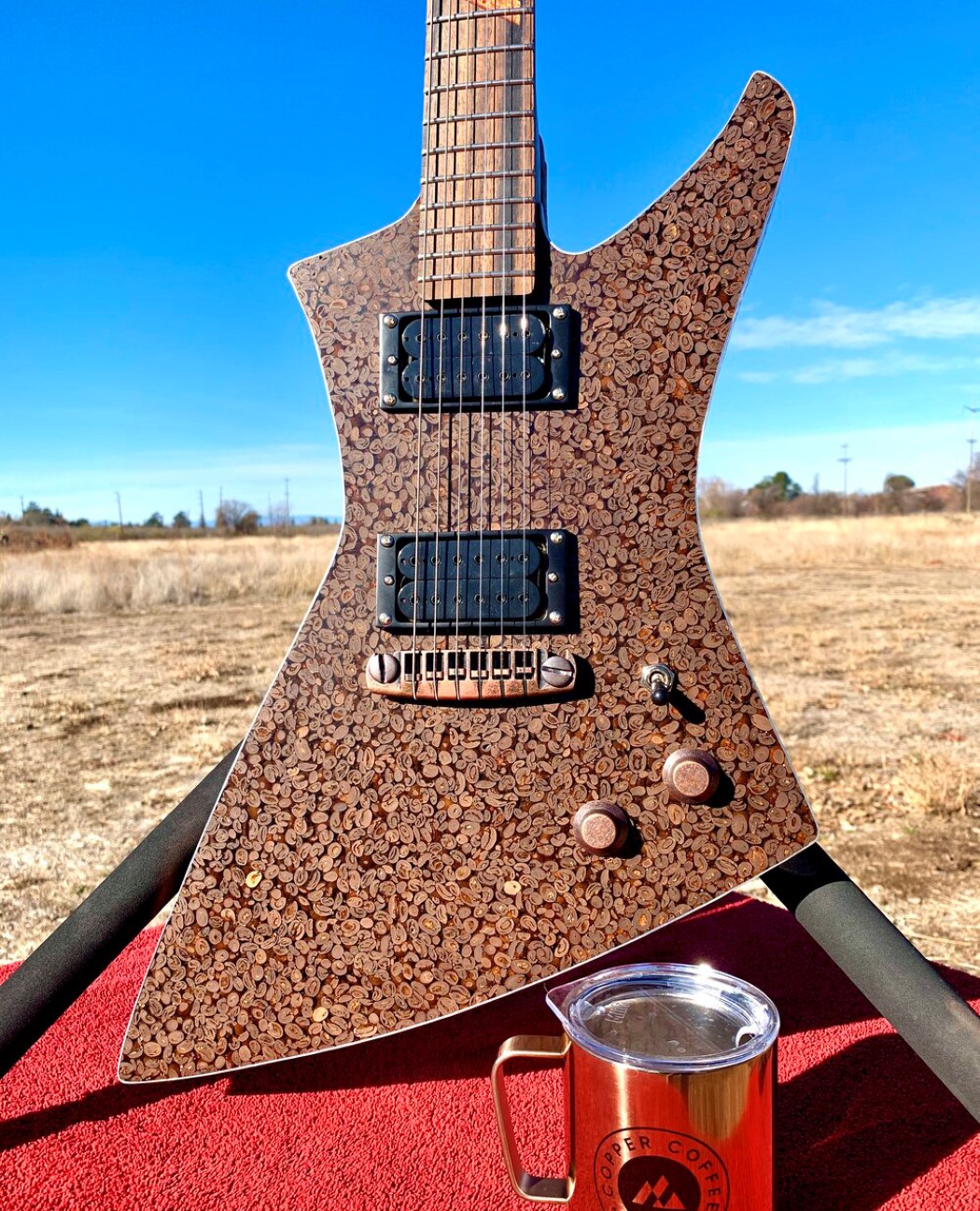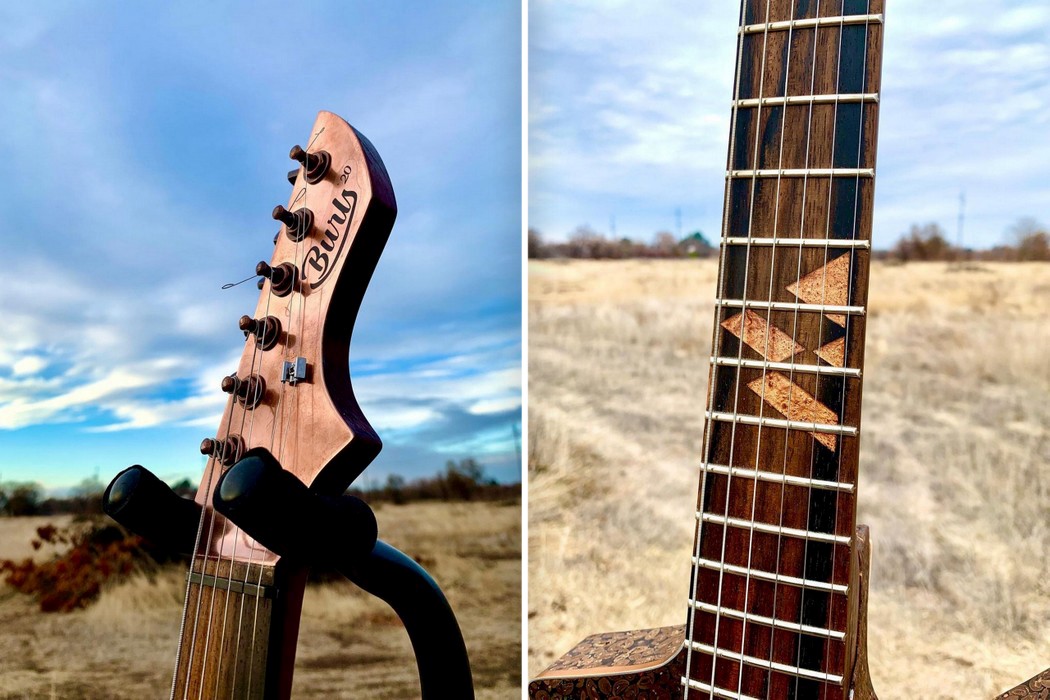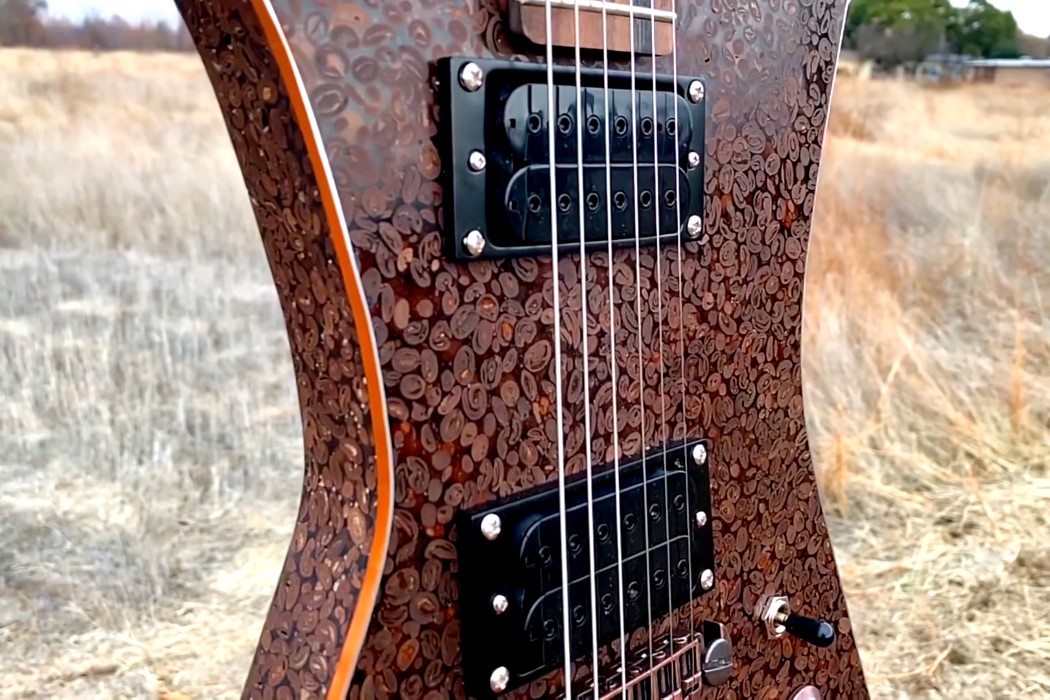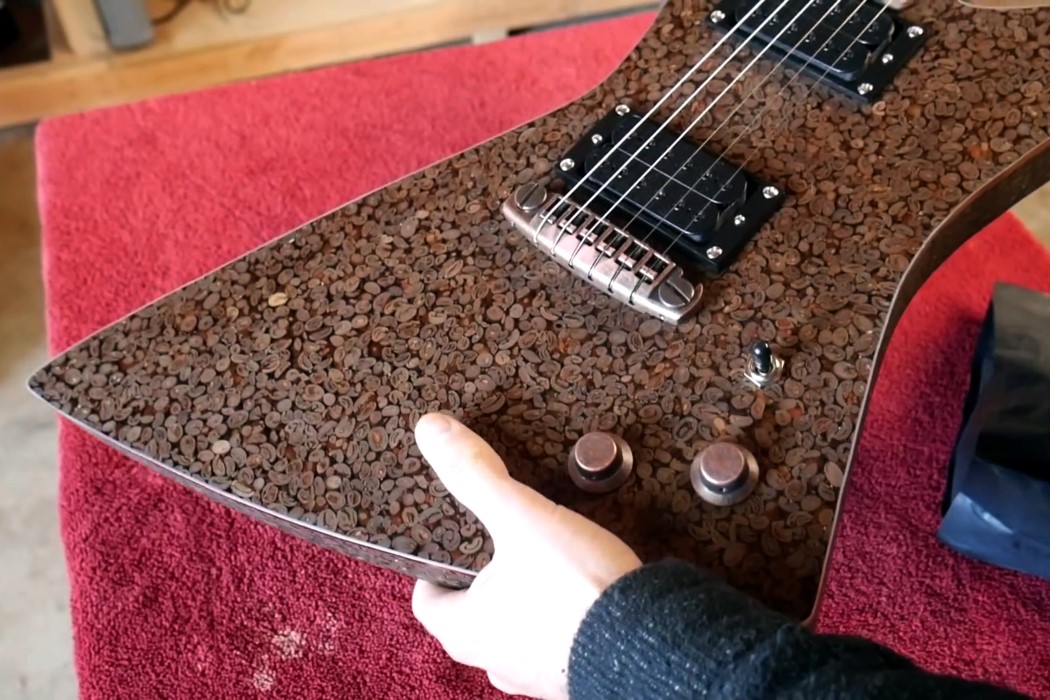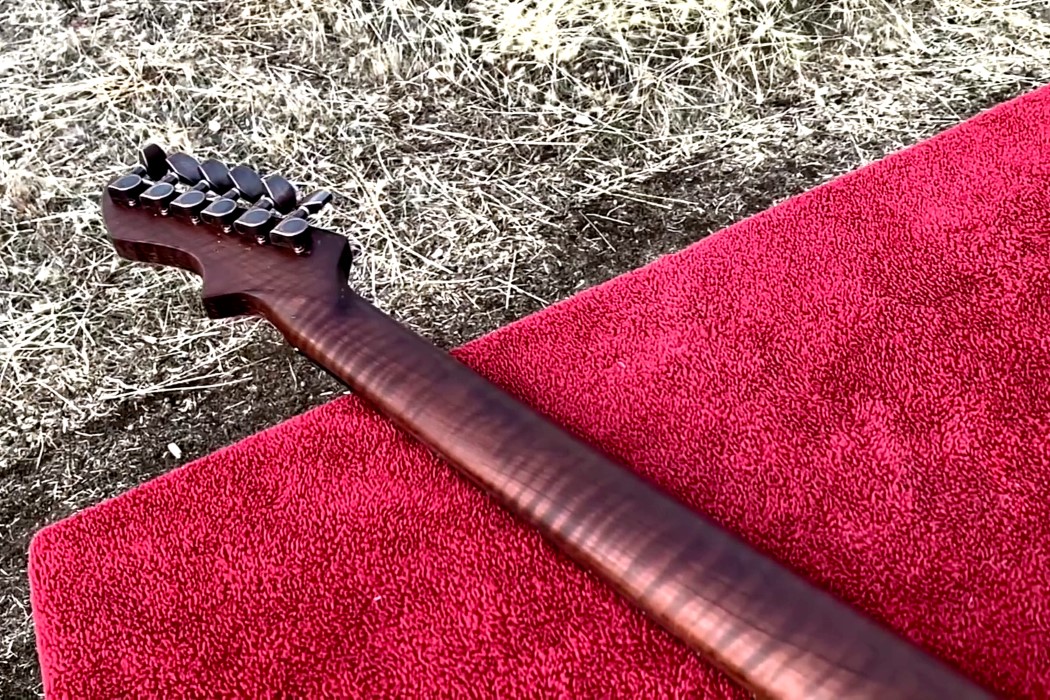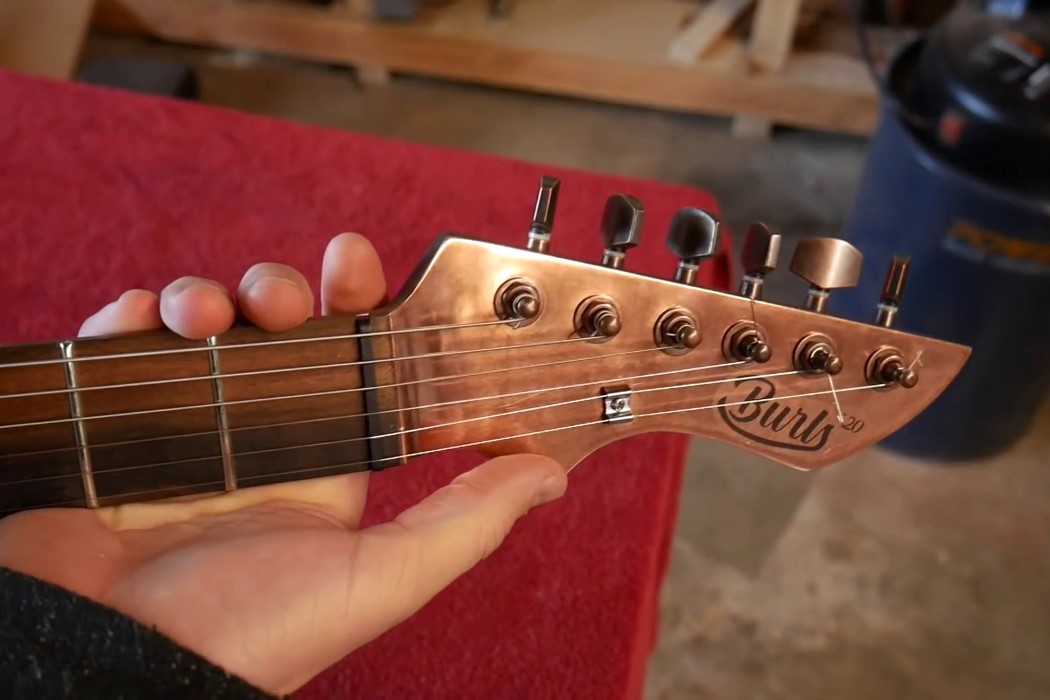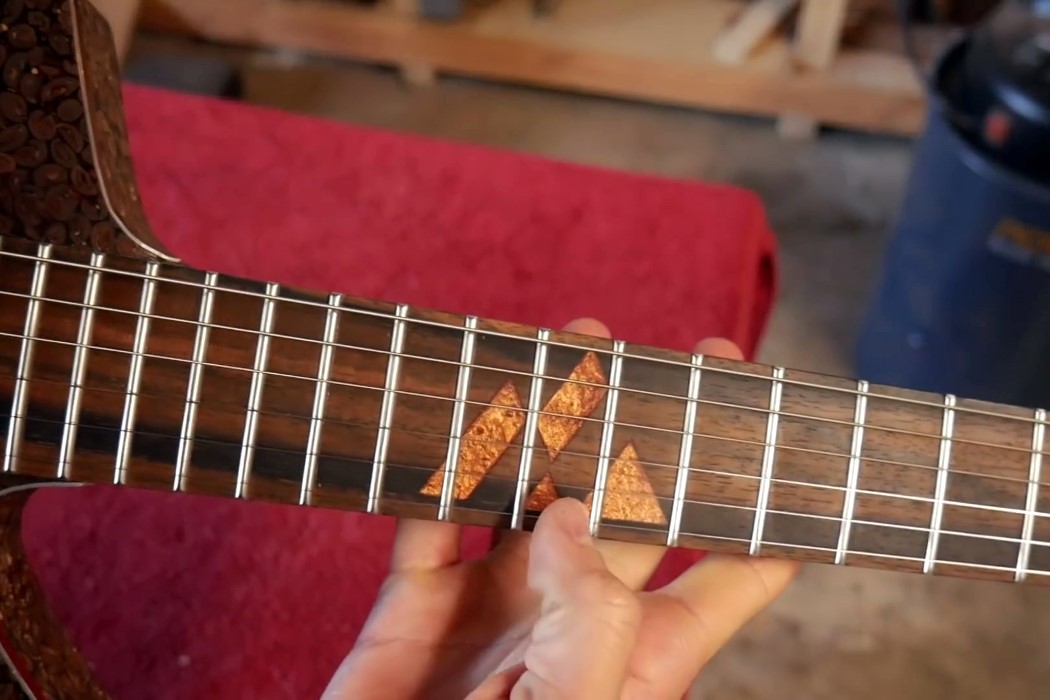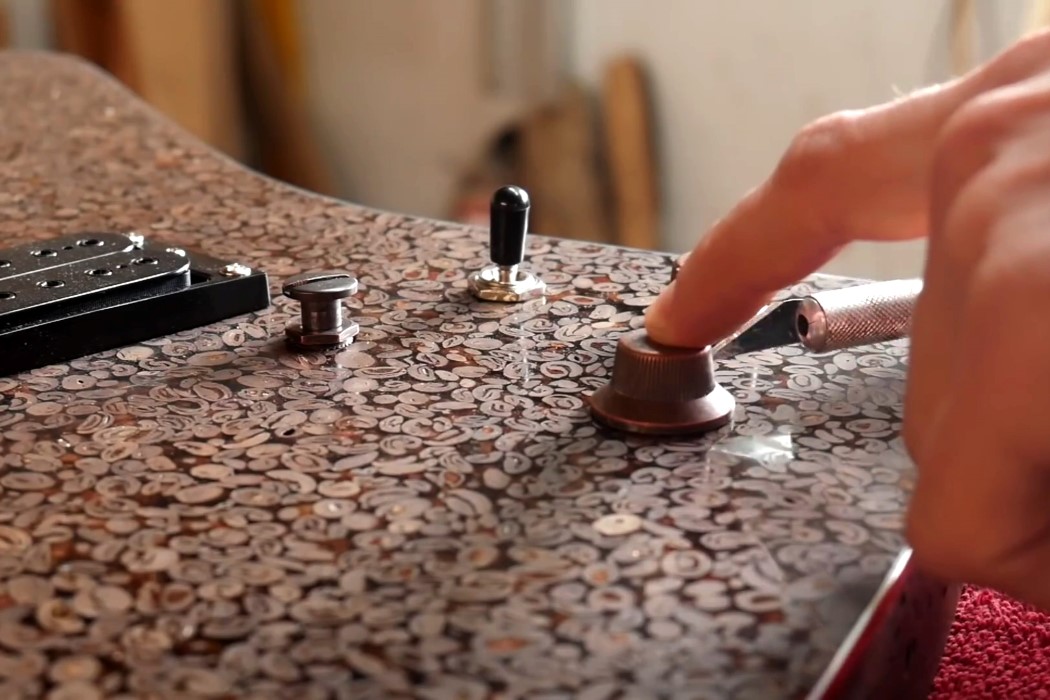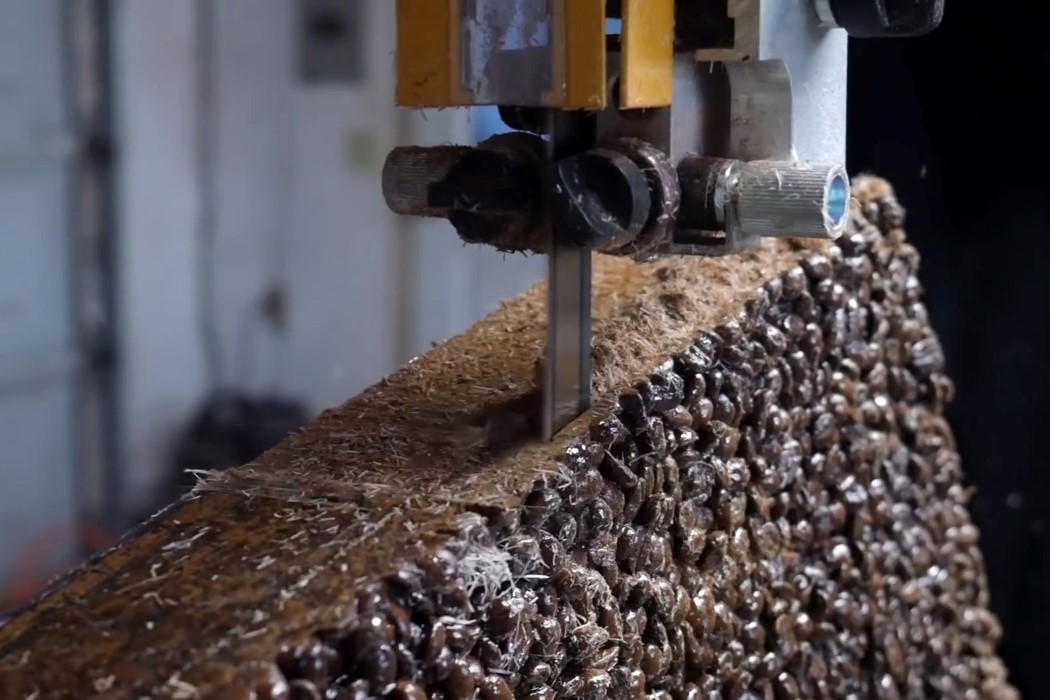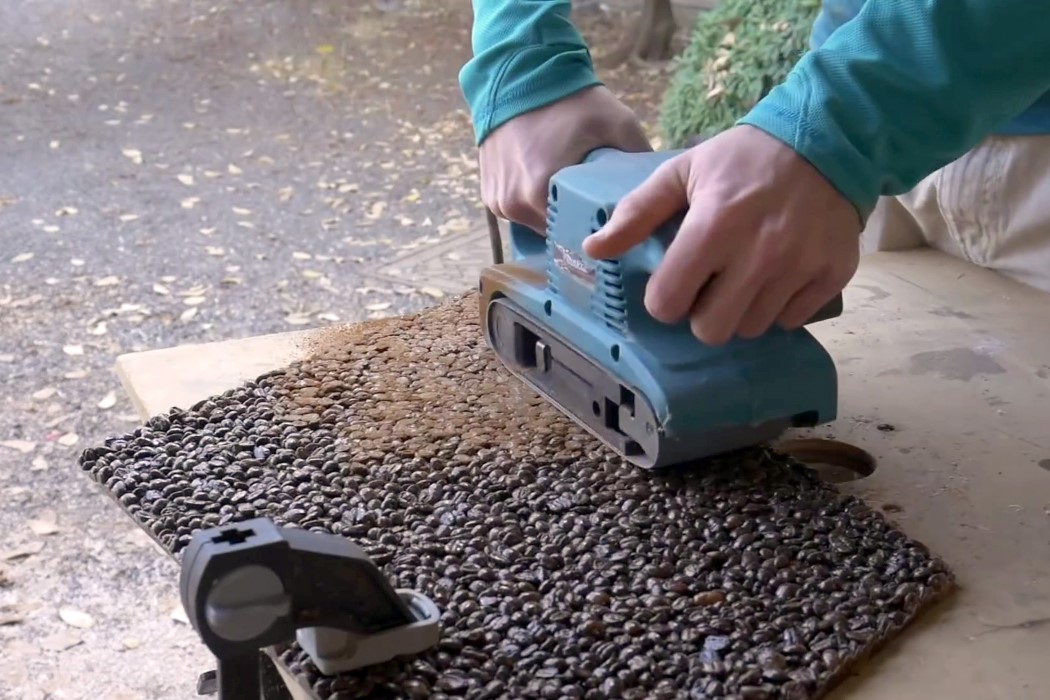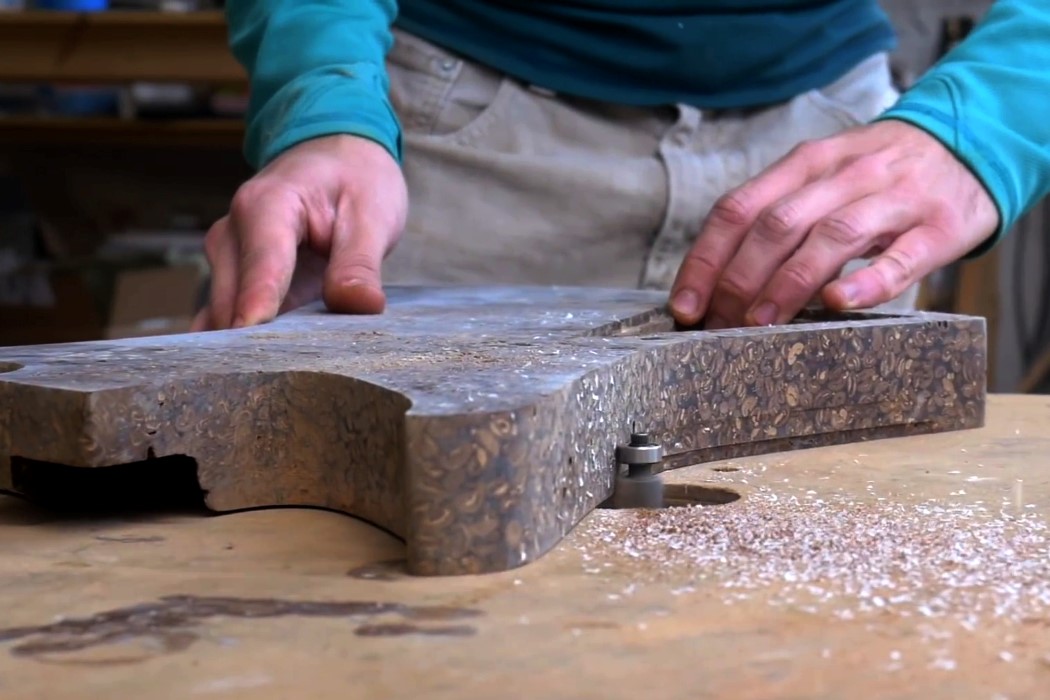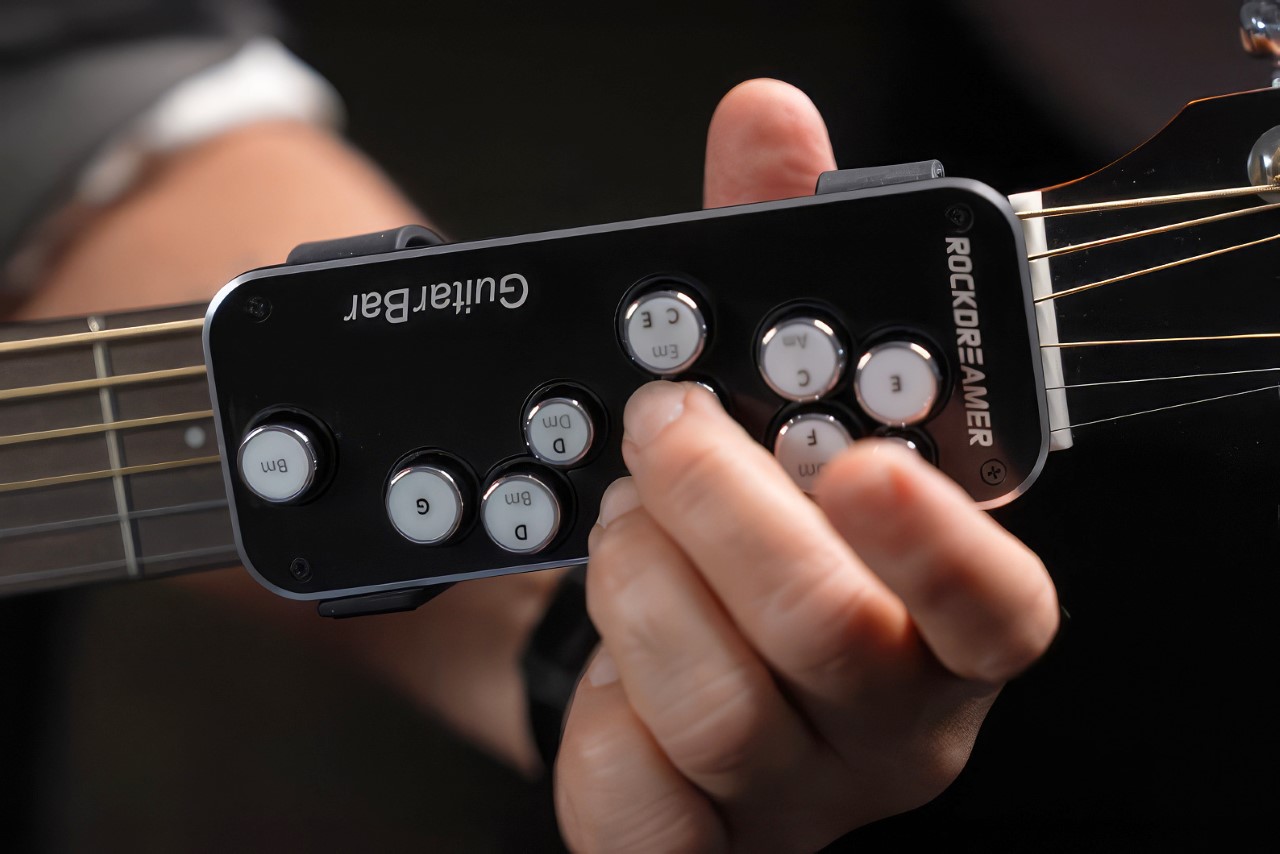
Playing your favorite song couldn’t be easier… but don’t mistake the Rockdreamer Guitar Bar for a learning apparatus.
As a guitar player myself, I’ve realized that playing the guitar may come easy with practice… but multitasking doesn’t. You could be a guitarist who’s struggling to also focus on singing, or a singer who’s desperately trying to play the guitar as an accompanying instrument… handling two tasks efficiently together isn’t easy, but the Guitar Bar makes it so. Designed as a module that simply straps to your standard guitar fretboard, the Guitar Bar simplifies playing chords by letting you press buttons instead of strings. No more struggling with learning chord shapes, struggling to change chords on time, or dealing with bruised fingertips. The Guitar Bar lets you pick up and start playing with ease… Maybe a little too much ease if you ask me!
Designer: Rockdreamer
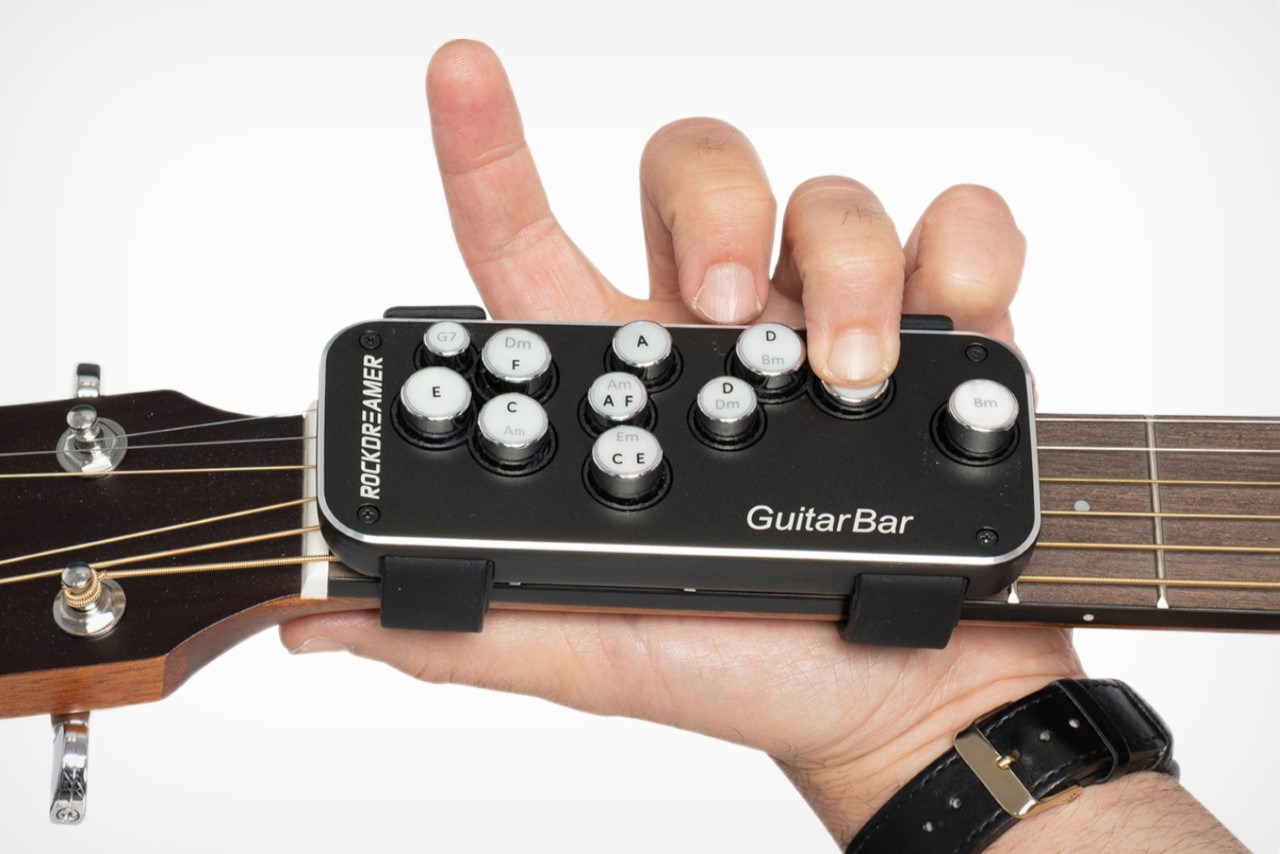
With a clever bit of mechanical engineering under its hood (quite similar to an analog typewriter), the Guitar Bar plays chords for you when you press down on one or two of its many buttons. The buttons are clearly labeled, and hitting the right buttons together activates tiny plastic studded arms that go and press down on the right frets.
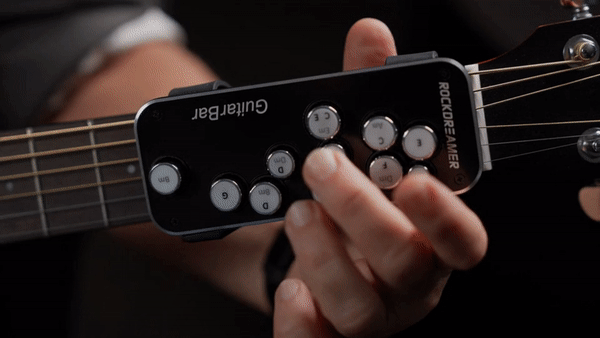
The Guitar Bar’s design is pretty impressive when you realize how carefully detailed it is on the inside and the outside. On the outside, the module comes with a handful of keys, all within range of your fingers and designed to be easy to press. In some instances, pressing two keys activates a major chord, while a single key activates a related minor chord. Flip the Guitar Bar over and you see exactly how brilliant its under-the-hood mechanics are. The buttons are merely a great, user-friendly alternative system for playing chords, and instead of remembering the shapes, now you just need to memorize the Guitar Bar’s key layout.
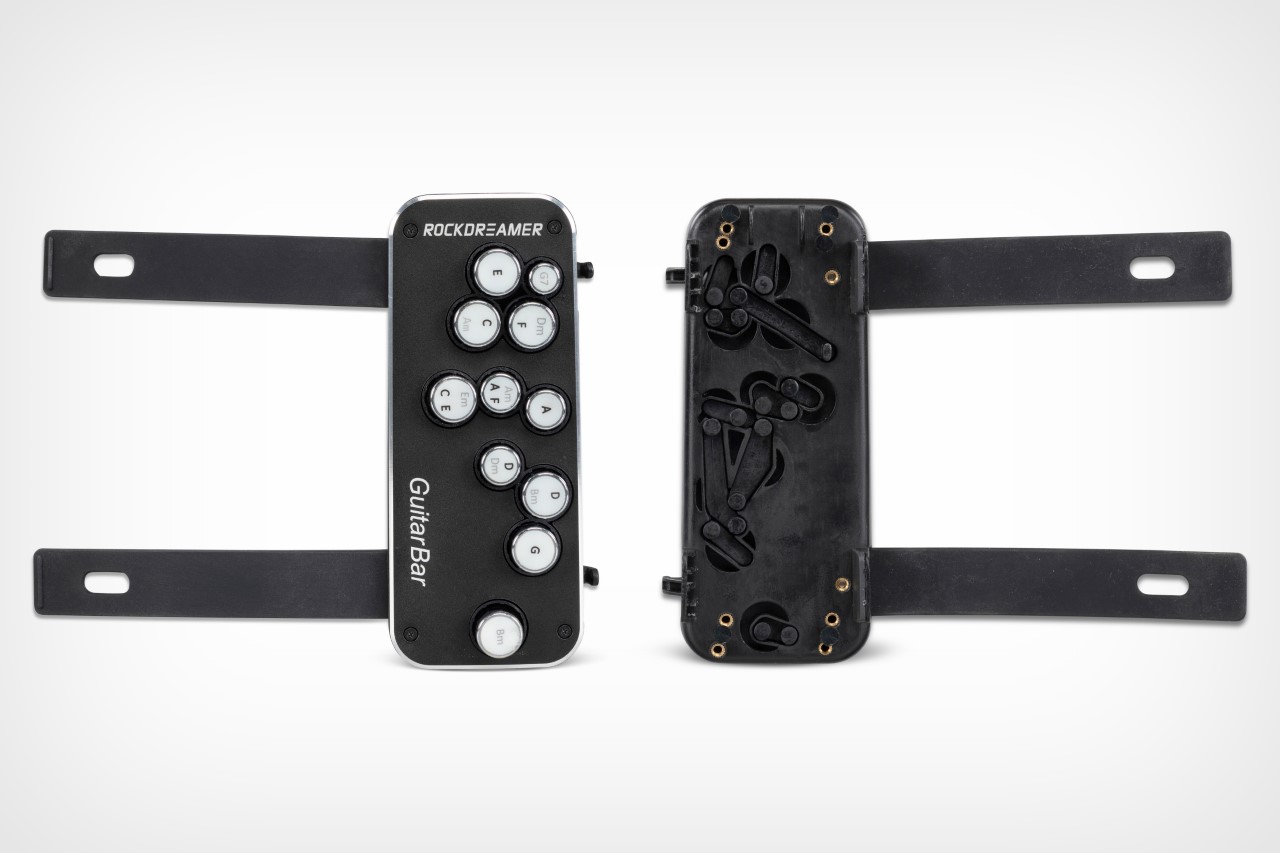
Where the guitarist in me gets a little riled up is in the need to point out that the Guitar Bar isn’t a guitar-learning tool – it’s a quick song-playing tool. If you really want to learn the guitar, an accessory like this one doesn’t really teach you how to play the instrument the same way mastering Guitar Hero teaches you how to play great electric leads. The Guitar Bar has its own massive limitations, like the fact that it comes pre-programmed with a set number of chords. While you can virtually play 80-90% of all popular music with these chords, the minute a song experiments with an unconventional chord structure, the Guitar Bar doesn’t help much. Moreover, Guitar Bar’s design doesn’t allow you to move it up and down the fretboard like a ‘spider capo’. It can only be strapped to the extreme end of the guitar, providing a limitation that only allows you to play on 20% of a fretboard, and only play chords because you can’t finger-pick or play leads/basslines.
That being said, the Guitar Bar does have its advantages. It’s perfect for someone who needs an accompanying instrument to sing, but doesn’t have the time or energy to learn the guitar. The Guitar Bar is perfect for amateur jam sessions, a campfire, or upgrading your karaoke night. If you really do want to master the instrument, you’ll need to get your hands dirty…
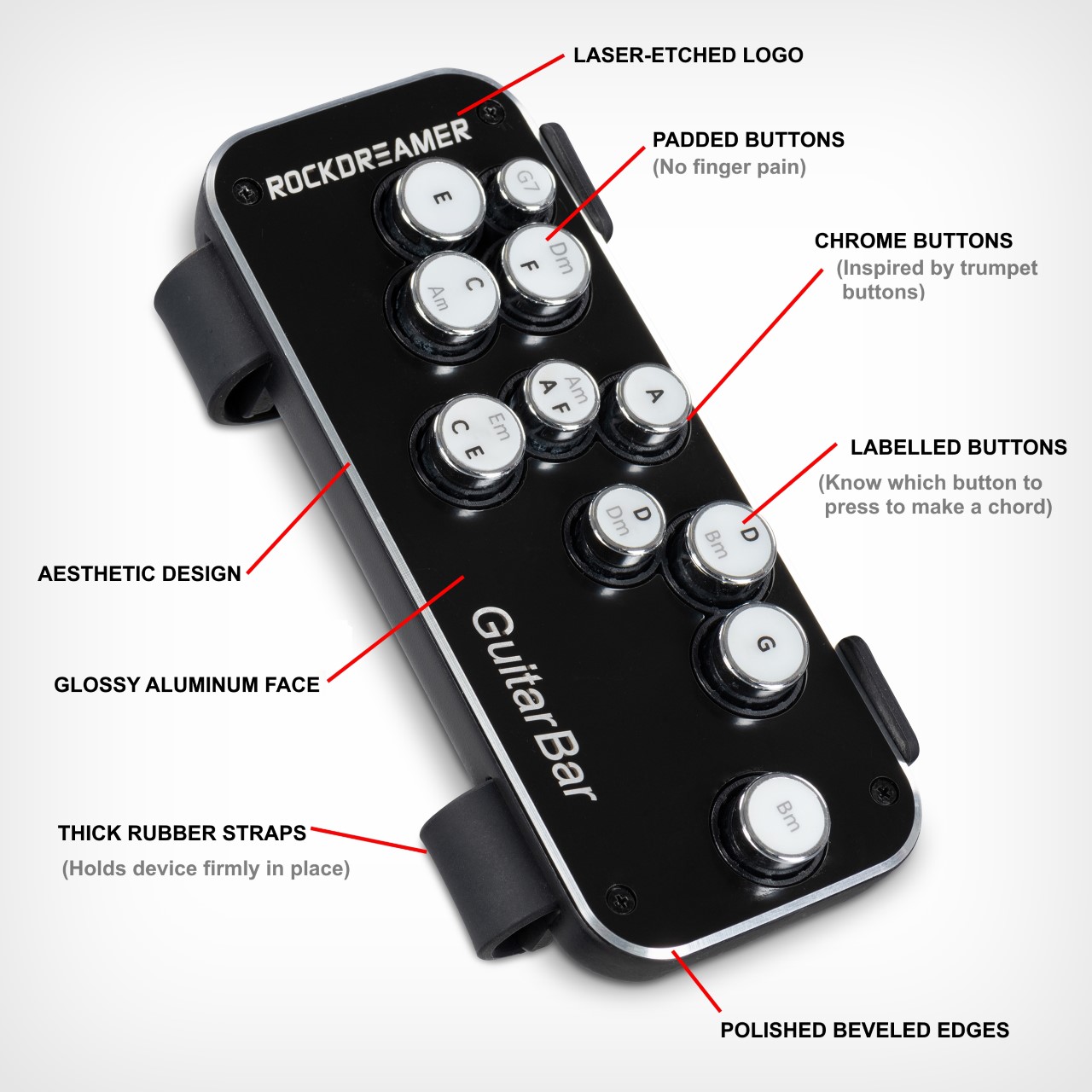
The post Nifty Guitar Accessory Straps To Your Fretboard And Gives You Single-Button Chord Access first appeared on Yanko Design.
